Kelly Jensen's Blog, page 96
December 10, 2014
"Best of YA" Lists By the Numbers: 2011 - 2014 Stats, Comparisons, and Thoughts
In 2011, I started keeping track of the YA books that made the "best of" lists across the professional publications, which include Kirkus, Horn Book, School Library Journal, Publishers Weekly, and in instances where it's happened, Library Journal. My methods of data collection have varied a little each year, as sometimes I've been more interested in one element than another or it's a matter of time, energy, and having read or having had access to titles to verify what they do or do not include.
Since there's now been four years of data, I thought it would be worthwhile to look at the similarities and differences as seen through these lists. This will be an imperfect post with imperfect data; it wasn't until the last couple of years I better understood what I was looking at and how to look at it. That means some of the data might be lacking in some years and it might be inaccurate in others. That doesn't change what's worth thinking about, though.
All of the data comes from the following posts:
2011 "Best of" by the numbers 2012 "Best of" by the numbers and further data about the "Best of" lists2013 "Best of" by the numbers part 1 and part 2 2014 "Best of" by the numbers
Because the journals have selected varying numbers of titles for their lists, haven't selected any titles for their lists, and because my own counting has changed over the years, the number of eligible titles in each data set is different. That doesn't make a huge change, though, when it comes to comparisons by percentages. Most years, between 55 and 90 titles are on these lists. Not all of the categories I'm going to hit in this comparison will have all four years featured; that has been noted where appropriate.
Let's dig in.
Gender and "Best of" Lists
Have more female authors always been on the "best of" lists? Has there been any sort of change over the last four years?
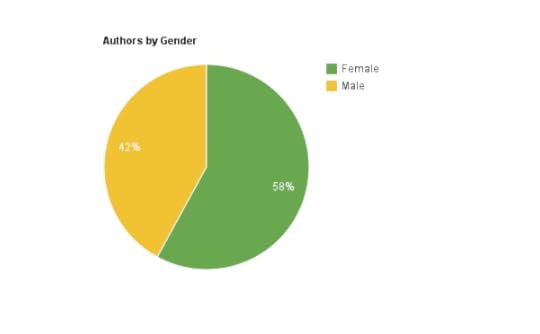
In 2011, the gender breakdown was 58% women and 42% men.
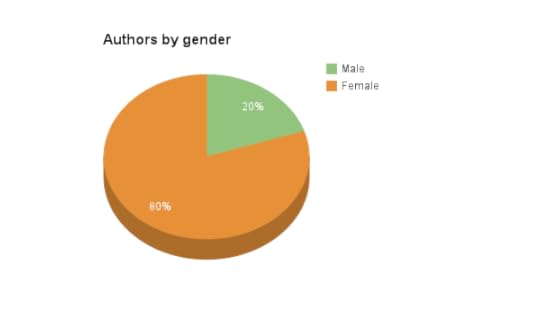 In 2012, 80% of the authors on the "best of" lists were women and 20% were men.
In 2012, 80% of the authors on the "best of" lists were women and 20% were men.
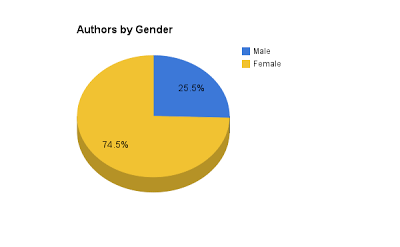
In 2013, the breakdown was roughly 75% women and 25% men.
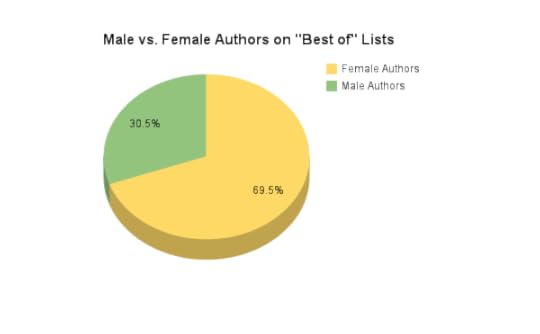
In 2014, the break down was roughly 70% female authors and 30% male authors.
Each of the four years, women had more books on the "best of" lists than men did. This is decidedly different than the New York Times Bestsellers list, which is dominated by male authors. On average, 70% of the "best of" authors are women and 30% are men.
There doesn't appear to be any trend here in terms of whether male or female authors are earning more or fewer spots each year.
When it comes to the gender of main characters, comparison is a little tricky, since I haven't been consistent about keeping track of that. I covered it in 2013 for the first time, but I didn't create a catch all category of "cast of characters" until this year. So this data is imperfect by nature, but I'm going to share it, since it's interesting nonetheless.
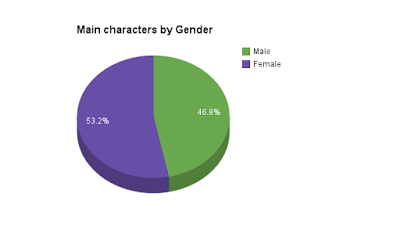
In 2013, the split of female and male main characters in YA fiction was almost 50/50. Female voices came ahead only slightly, with 53% of the titles. For a year when there were far more female authors than there were male authors, it can't be said male voices were underrepresented in the books at all.
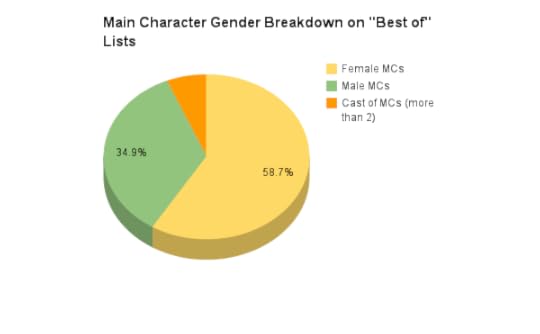 2014 had more female voices than male voices represented, but with the cast of characters as a third factor, the representation isn't hugely different. Again, despite having more female authors on the "best of" lists, the difference in male voices in the books against female voices in the books remains not hugely different. There are plenty of books featuring male main characters and they're earning recognition.
2014 had more female voices than male voices represented, but with the cast of characters as a third factor, the representation isn't hugely different. Again, despite having more female authors on the "best of" lists, the difference in male voices in the books against female voices in the books remains not hugely different. There are plenty of books featuring male main characters and they're earning recognition.
Debut Authors and "Best of" Lists
As more people talk about and seek out debut authors, has that impacted the "best of" lists at all? Are we seeing more now than we did in 2011 or are we seeing about the same number? This particular factor interests me as it relates to the Morris award and when the finalists are announced. I haven't kept record of that from prior to this year, so I can't make a call on how it may or may not influence picks on these lists.
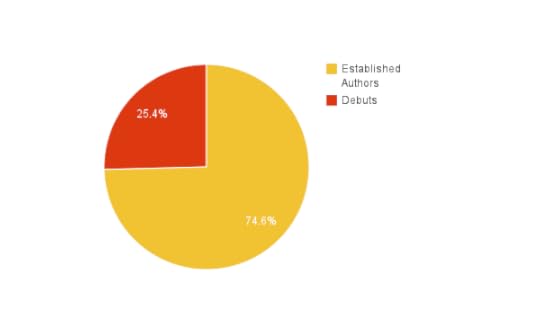
In 2011, roughly 25% of the books on "best of" lists were by debut authors, while 75% were by authors who'd been previously published.
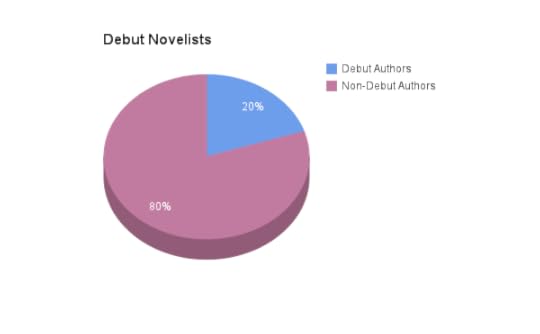 The numbers changed a little bit in 2012, as 20% of the authors were debuts and 80% were more seasoned authors.
The numbers changed a little bit in 2012, as 20% of the authors were debuts and 80% were more seasoned authors.
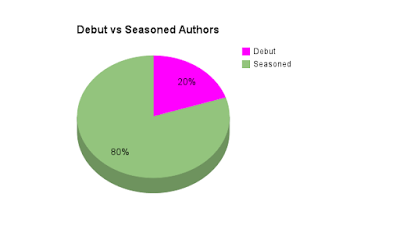 The percentages were unchanged in 2013, with 20% of authors being debut and 80% being previously published.
The percentages were unchanged in 2013, with 20% of authors being debut and 80% being previously published.
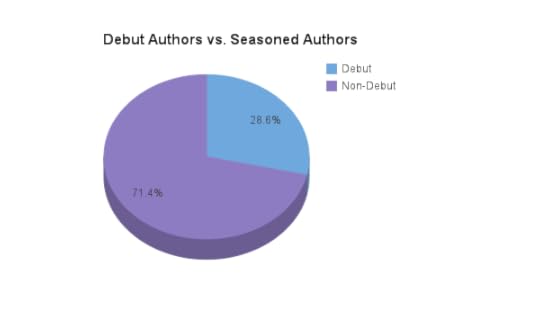 2014 featured the biggest percentage of debut authors, at almost 29%, with previously published authors filling 71% of the "best of" list slots.
2014 featured the biggest percentage of debut authors, at almost 29%, with previously published authors filling 71% of the "best of" list slots.
The data shows there's never been fewer than 20% of "best of" picks going to debut authors. This seems like a really positive percentage and shows how professionals picking these lists aren't sticking entirely to those voices that are familiar to them. I think that sort of recognition -- one that happens with Morris titles, too -- helps these books find new readers and helps grow excitement for those debut authors' sophomore efforts.
"Best of" Books By Genre
Genre is touch to figure out every year. Some books could go one way or another way, and some books cross genres and blur the lines between them. In fact, something I've noticed about many of the "best of" titles over the years is that many of them seem to find themselves on these lists for that very reason -- they are doing unique things with genre, making them stand out as memorable.
But have there been any trends over the last four years? Is there one kind of book doing more strongly than others? Are there genres which don't seem to appear as many times as others on these lists?
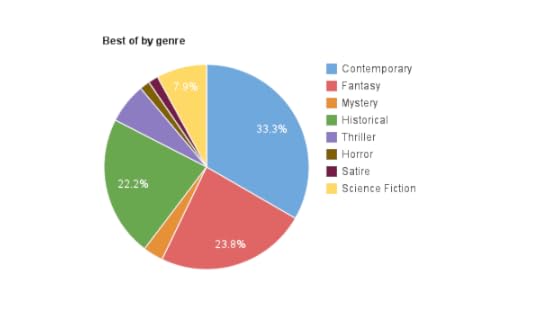
The first stab I took at genre was in 2011, wherein for some reason I thought it was valuable to separate thrillers from mysteries. There weren't as many genre-braided titles in this year, though as it shows, contemporary/realistic titles had the most representation, followed closely by fantasy, historical fiction, and then mysteries/thrillers, and science fiction.

The 2012 breakdown looks a little different than 2011, wherein fantasy titles outranked realistic, followed by historical, science fiction, then mysteries/thrillers. There was a noted drop in historical fiction here from the previous year.
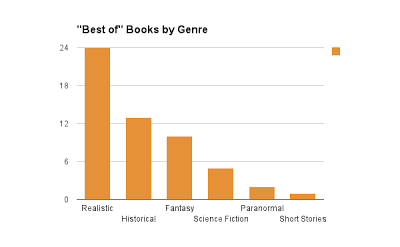
In 2013, I discovered how much easier this data is to look at in bar form than in pie form. Realistic fiction took the top spots this year, followed by historical fiction, then fantasy. If fantasy and paranormal were folded together, it's likely it would be even with historical, if not slightly more.
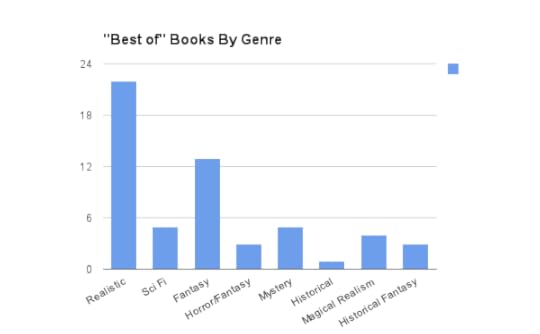
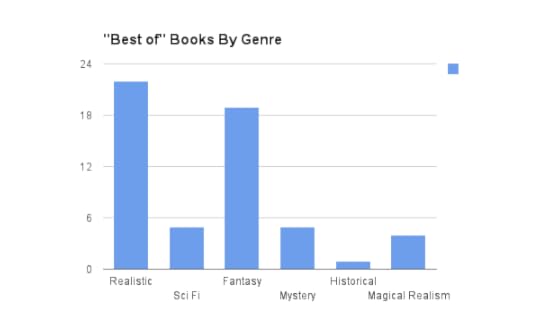
Even when the subgenres of fantasy were collapsed, realistic fiction still held the most "best of" spots in 2014. Fantasy wasn't far behind. But most interesting is that historical fiction is nearly non-existent in 2014 on the lists -- more books were historical fantasy than actual historical fiction. This year also ushered in more titles that were magical realism, as that was a subgenre/blending of genres not seen in previous years.
Maybe the most interesting thing about this data is how science fiction hasn't been a leading genre in the "best of" lists. In fact, it's fallen a bit -- are we not seeing science fiction among the "best" anymore? Has there been a drop in the number of science fiction titles being published? Are science fiction books more likely part of a series and thus not always easy to put on "best" lists? There are more questions than answers, but I want to know more about what's happening with science fiction in YA.
Also worth noting: despite the fact everyone considered this to be THE year for contemporary/realistic fiction, it's not really doing better than in previous years. This is a statement I've made since the start, and I'll stick with it: contemporary/realistic fiction isn't a trend. It's a staple, and it's always been there and always been stable. Even if a couple of big names have made it more prominent in bookstores and in getting marketing/publicity money, the trend isn't changing how well-respected and regarded it is. People have been reading it and people will continue reading it.
Diversity and the "Best of" Lists
So...have we been seeing more people of color and more LGBTQ representation on the "best of" lists in the last four years?
My data on this has been presented a few ways, depending on what information I could find about books or authors in a given year. I haven't made any of this data visual in the past, so I'm going to continue in that trend:
In 2011, 8 books were primarily about or featured a main character of color. 2 featured main characters who identified as LGBTQ. I did not count authors in this year, citing that finding the information was too difficult, and I believe this -- people have been identifying more in the last couple of years, making that information more public and accessible.
In 2012, there were 89 books and 90 authors represented in the data. I collapsed representation of people of color this year, meaning the count included both the authors who identified and he books that featured a main character of color. There were 20 titles/authors that fit. A total of 6 books featured LGBTQ main characters or story lines.
In 2013, I kept the author/character counts separate for people of color, and I found that 8 of the authors were people of color, and 10 of the books featured main characters of color, for a total of 18. There were 55 authors and 62 main characters. A total of 5 books by my count featured main characters who identified as LGBTQ, though as noted in the comments, I didn't include The Dream Thieves, so there are actually 6.
In 2014, there were 14 main characters/authors that I identified as people of color and a total of 6 books that featured LGBTQ main characters or story lines.
It's really tough to tell whether or not things are improving or not. Sure, there are more people of color and more LGBTQ stories represented in the last year than in the first year, but it's still a very small percentage. As I noted yesterday, only 2 books featured stories where the main character identified as LGBTQ and a person of color. I think it's about damn time we saw more of these stories and about time we saw more of these stories being recognized.
What can be said, though, is these numbers are still tiny.
Final Data and Thoughts
There's not a lot else to dig into when comparing the data that's particularly useful -- I note every year that Candlewick seems to have a good number of titles on "best of" lists for a publisher as small as they are, and I also note every year that books published as hardcovers have a markedly better time of being recognized as "best of" titles than paperback originals or split run titles. Books published in April, May, September, and October have better chances of landing on lists than those published in November, December, January, July, and August.
Journals have been changing their number of titles selected each year, and that's been interesting to see. A few years ago, Kirkus selected 100 titles; this year, they selected 50. Not all of them ended up in my count, since they included fiction and non-fiction, but Kirkus still has the largest number of titles on the list, and the titles Kirkus selects more often only end up on the Kirkus list, as opposed to showing up on numerous lists.
Another worthy element to consider, which I haven't here but could if I were to dig up all of my original spreadsheets, is whether there are authors who are perennial favorites. I have a suspicion, for example, that Maggie Stiefvater and A. S. King are two authors who have appeared every year on these lists (in fact, I know that they have!). Anyone who is up for the challenge of ferreting that out is more than welcome to do so, and I'd be happy to include that work in a link round-up feature here.
So, with all of this data now here, what's surprising? Is there anything worth thinking about or any conclusions worth drawing? What sort of picture does this paint about what is considered the best in any given year? What is going on in science fiction?
I'd love to hear thoughts and ideas about this, or anything else noteworthy in the "best of" lists, as there's now a four-year look at data.






 Related Stories"Best of 2014" in YA Fiction List Break Down"Best of 2013" YA List Breakdown, Part 2Get Genrefied: Christian Fiction
Related Stories"Best of 2014" in YA Fiction List Break Down"Best of 2013" YA List Breakdown, Part 2Get Genrefied: Christian Fiction
Since there's now been four years of data, I thought it would be worthwhile to look at the similarities and differences as seen through these lists. This will be an imperfect post with imperfect data; it wasn't until the last couple of years I better understood what I was looking at and how to look at it. That means some of the data might be lacking in some years and it might be inaccurate in others. That doesn't change what's worth thinking about, though.
All of the data comes from the following posts:
2011 "Best of" by the numbers 2012 "Best of" by the numbers and further data about the "Best of" lists2013 "Best of" by the numbers part 1 and part 2 2014 "Best of" by the numbers
Because the journals have selected varying numbers of titles for their lists, haven't selected any titles for their lists, and because my own counting has changed over the years, the number of eligible titles in each data set is different. That doesn't make a huge change, though, when it comes to comparisons by percentages. Most years, between 55 and 90 titles are on these lists. Not all of the categories I'm going to hit in this comparison will have all four years featured; that has been noted where appropriate.
Let's dig in.
Gender and "Best of" Lists
Have more female authors always been on the "best of" lists? Has there been any sort of change over the last four years?

In 2011, the gender breakdown was 58% women and 42% men.
 In 2012, 80% of the authors on the "best of" lists were women and 20% were men.
In 2012, 80% of the authors on the "best of" lists were women and 20% were men. 
In 2013, the breakdown was roughly 75% women and 25% men.

In 2014, the break down was roughly 70% female authors and 30% male authors.
Each of the four years, women had more books on the "best of" lists than men did. This is decidedly different than the New York Times Bestsellers list, which is dominated by male authors. On average, 70% of the "best of" authors are women and 30% are men.
There doesn't appear to be any trend here in terms of whether male or female authors are earning more or fewer spots each year.
When it comes to the gender of main characters, comparison is a little tricky, since I haven't been consistent about keeping track of that. I covered it in 2013 for the first time, but I didn't create a catch all category of "cast of characters" until this year. So this data is imperfect by nature, but I'm going to share it, since it's interesting nonetheless.

In 2013, the split of female and male main characters in YA fiction was almost 50/50. Female voices came ahead only slightly, with 53% of the titles. For a year when there were far more female authors than there were male authors, it can't be said male voices were underrepresented in the books at all.
 2014 had more female voices than male voices represented, but with the cast of characters as a third factor, the representation isn't hugely different. Again, despite having more female authors on the "best of" lists, the difference in male voices in the books against female voices in the books remains not hugely different. There are plenty of books featuring male main characters and they're earning recognition.
2014 had more female voices than male voices represented, but with the cast of characters as a third factor, the representation isn't hugely different. Again, despite having more female authors on the "best of" lists, the difference in male voices in the books against female voices in the books remains not hugely different. There are plenty of books featuring male main characters and they're earning recognition. Debut Authors and "Best of" Lists
As more people talk about and seek out debut authors, has that impacted the "best of" lists at all? Are we seeing more now than we did in 2011 or are we seeing about the same number? This particular factor interests me as it relates to the Morris award and when the finalists are announced. I haven't kept record of that from prior to this year, so I can't make a call on how it may or may not influence picks on these lists.

In 2011, roughly 25% of the books on "best of" lists were by debut authors, while 75% were by authors who'd been previously published.
 The numbers changed a little bit in 2012, as 20% of the authors were debuts and 80% were more seasoned authors.
The numbers changed a little bit in 2012, as 20% of the authors were debuts and 80% were more seasoned authors. The percentages were unchanged in 2013, with 20% of authors being debut and 80% being previously published.
The percentages were unchanged in 2013, with 20% of authors being debut and 80% being previously published. 2014 featured the biggest percentage of debut authors, at almost 29%, with previously published authors filling 71% of the "best of" list slots.
2014 featured the biggest percentage of debut authors, at almost 29%, with previously published authors filling 71% of the "best of" list slots.The data shows there's never been fewer than 20% of "best of" picks going to debut authors. This seems like a really positive percentage and shows how professionals picking these lists aren't sticking entirely to those voices that are familiar to them. I think that sort of recognition -- one that happens with Morris titles, too -- helps these books find new readers and helps grow excitement for those debut authors' sophomore efforts.
"Best of" Books By Genre
Genre is touch to figure out every year. Some books could go one way or another way, and some books cross genres and blur the lines between them. In fact, something I've noticed about many of the "best of" titles over the years is that many of them seem to find themselves on these lists for that very reason -- they are doing unique things with genre, making them stand out as memorable.
But have there been any trends over the last four years? Is there one kind of book doing more strongly than others? Are there genres which don't seem to appear as many times as others on these lists?

The first stab I took at genre was in 2011, wherein for some reason I thought it was valuable to separate thrillers from mysteries. There weren't as many genre-braided titles in this year, though as it shows, contemporary/realistic titles had the most representation, followed closely by fantasy, historical fiction, and then mysteries/thrillers, and science fiction.

The 2012 breakdown looks a little different than 2011, wherein fantasy titles outranked realistic, followed by historical, science fiction, then mysteries/thrillers. There was a noted drop in historical fiction here from the previous year.

In 2013, I discovered how much easier this data is to look at in bar form than in pie form. Realistic fiction took the top spots this year, followed by historical fiction, then fantasy. If fantasy and paranormal were folded together, it's likely it would be even with historical, if not slightly more.


Even when the subgenres of fantasy were collapsed, realistic fiction still held the most "best of" spots in 2014. Fantasy wasn't far behind. But most interesting is that historical fiction is nearly non-existent in 2014 on the lists -- more books were historical fantasy than actual historical fiction. This year also ushered in more titles that were magical realism, as that was a subgenre/blending of genres not seen in previous years.
Maybe the most interesting thing about this data is how science fiction hasn't been a leading genre in the "best of" lists. In fact, it's fallen a bit -- are we not seeing science fiction among the "best" anymore? Has there been a drop in the number of science fiction titles being published? Are science fiction books more likely part of a series and thus not always easy to put on "best" lists? There are more questions than answers, but I want to know more about what's happening with science fiction in YA.
Also worth noting: despite the fact everyone considered this to be THE year for contemporary/realistic fiction, it's not really doing better than in previous years. This is a statement I've made since the start, and I'll stick with it: contemporary/realistic fiction isn't a trend. It's a staple, and it's always been there and always been stable. Even if a couple of big names have made it more prominent in bookstores and in getting marketing/publicity money, the trend isn't changing how well-respected and regarded it is. People have been reading it and people will continue reading it.
Diversity and the "Best of" Lists
So...have we been seeing more people of color and more LGBTQ representation on the "best of" lists in the last four years?
My data on this has been presented a few ways, depending on what information I could find about books or authors in a given year. I haven't made any of this data visual in the past, so I'm going to continue in that trend:
In 2011, 8 books were primarily about or featured a main character of color. 2 featured main characters who identified as LGBTQ. I did not count authors in this year, citing that finding the information was too difficult, and I believe this -- people have been identifying more in the last couple of years, making that information more public and accessible.
In 2012, there were 89 books and 90 authors represented in the data. I collapsed representation of people of color this year, meaning the count included both the authors who identified and he books that featured a main character of color. There were 20 titles/authors that fit. A total of 6 books featured LGBTQ main characters or story lines.
In 2013, I kept the author/character counts separate for people of color, and I found that 8 of the authors were people of color, and 10 of the books featured main characters of color, for a total of 18. There were 55 authors and 62 main characters. A total of 5 books by my count featured main characters who identified as LGBTQ, though as noted in the comments, I didn't include The Dream Thieves, so there are actually 6.
In 2014, there were 14 main characters/authors that I identified as people of color and a total of 6 books that featured LGBTQ main characters or story lines.
It's really tough to tell whether or not things are improving or not. Sure, there are more people of color and more LGBTQ stories represented in the last year than in the first year, but it's still a very small percentage. As I noted yesterday, only 2 books featured stories where the main character identified as LGBTQ and a person of color. I think it's about damn time we saw more of these stories and about time we saw more of these stories being recognized.
What can be said, though, is these numbers are still tiny.
Final Data and Thoughts
There's not a lot else to dig into when comparing the data that's particularly useful -- I note every year that Candlewick seems to have a good number of titles on "best of" lists for a publisher as small as they are, and I also note every year that books published as hardcovers have a markedly better time of being recognized as "best of" titles than paperback originals or split run titles. Books published in April, May, September, and October have better chances of landing on lists than those published in November, December, January, July, and August.
Journals have been changing their number of titles selected each year, and that's been interesting to see. A few years ago, Kirkus selected 100 titles; this year, they selected 50. Not all of them ended up in my count, since they included fiction and non-fiction, but Kirkus still has the largest number of titles on the list, and the titles Kirkus selects more often only end up on the Kirkus list, as opposed to showing up on numerous lists.
Another worthy element to consider, which I haven't here but could if I were to dig up all of my original spreadsheets, is whether there are authors who are perennial favorites. I have a suspicion, for example, that Maggie Stiefvater and A. S. King are two authors who have appeared every year on these lists (in fact, I know that they have!). Anyone who is up for the challenge of ferreting that out is more than welcome to do so, and I'd be happy to include that work in a link round-up feature here.
So, with all of this data now here, what's surprising? Is there anything worth thinking about or any conclusions worth drawing? What sort of picture does this paint about what is considered the best in any given year? What is going on in science fiction?
I'd love to hear thoughts and ideas about this, or anything else noteworthy in the "best of" lists, as there's now a four-year look at data.







 Related Stories"Best of 2014" in YA Fiction List Break Down"Best of 2013" YA List Breakdown, Part 2Get Genrefied: Christian Fiction
Related Stories"Best of 2014" in YA Fiction List Break Down"Best of 2013" YA List Breakdown, Part 2Get Genrefied: Christian Fiction
Published on December 10, 2014 22:00
December 9, 2014
Get Genrefied: Christian Fiction
This month, we're tackling Christian fiction. For most of the genre guides, I've stuck to stuff I know really well, but I don't read much Christian fiction myself, so I'm branching out a bit for this one. It's an important genre to know about and helps fill a niche for many teen readers.
Introduction
In general, Christian fiction encompasses those stories that present a Christian worldview. This definition is really broad, but deliberately so. Often there will be explicit mention of God, Jesus, the Bible, sin and redemption, and so on, and the protagonist's journey will be overtly spiritual. But that's not always the case. Sometimes the focus is more allegorical (think Narnia) or the Christian ideology is subtler and conveyed more through character actions rather than deliberate mention of religious tenets. It can also be any genre under the sun: realistic, contemporary, historical, fantasy, science fiction, and so on. Because Christian fiction can be done with such a light touch, sometimes it's unclear whether a certain book should truly be called "Christian fiction." For example, there's a lot of debate over whether Tolkien's Lord of the Rings is Christian fiction (source). This also makes it really important to be able to recognize Christian fiction by its publishing house or author, since it's not always apparent from the book blurb.
Christian fiction is huge in the adult market. If you work in a public library, you've no doubt seen the hordes of Amish fiction that readers can't seem to get enough of (referred to as the "bonnet brigade" by one of my co-workers). It's not just Amish fiction though; it's also books like Left Behind or Karen Kingsbury's hugely popular novels. Christian fiction also encompasses some specific subgenres such as Catholic or Mormon fiction, which can be hugely popular among their intended audience. Christian adult fiction is sometimes referred to as "inspirational fiction," but I haven't seen that term used as much for teen novels. It does give a good idea of some of the appeal behind these books though: they're meant to uplift and inspire. Christian fiction in general also doesn't seem to be as widespread in the teen realm, but there's a definite readership for it.
In my experience, the teens who seek out Christian fiction are those who want to see their Christian values reflected in the books they read. Often, these values are quite conservative - socially, politically, and religiously - but not always. Christian fiction reads tend to be gentler reads, with less violence, sex, and foul language - but again, not always. Often the assumption is that the parents foist these books on their kids, but I find that teens also want them without any prompting from their parents. Christian teens whose religion is a big part of their lives are drawn to stories featuring protagonists whose religious beliefs mirror their own. I'm reminded of this piece written a few years ago about the seeming lack of religion or religious protagonists in YA. Christian fiction helps fill this gap.
Because Christian fiction ranges from very message-heavy to very subtly religious, it has the ability to attract a wide range of readers, and publishers are trying to capitalize on that. Blink, a new imprint of Zondervan launched in 2013, aims to publish YA Christian fiction "for anyone, regardless of faith." Their About page on their website doesn't even mention the word Christian anywhere. The YA bloggers at Redeemed Reader discussed a few of Blink's first titles (part one, part two), giving their opinions on the stories as Christian fiction and whether they thought the books would appeal to non-Christians. Those two posts are also a great way to get an idea of what Christian fiction means to teens who read it regularly.
Resources
As I mentioned above, recognizing Christian fiction from a book blurb isn't always easy. Look for specific publishers/imprints and authors to clue you in.
Publishers/Imprints:
Baker Publishing Group, including Bethany House and RevellHarperCollins Christian Publishing, which includes Blink, Thomas Nelson, and Zondervan/Zonderkidz Tyndale HouseWaterbrook Multnomah, including Waterbrook Press and Multnomah BooksMoody Publishers including Moody UrbanPopular YA Christian Fiction Authors:
Ted DekkerMelody CarlsonDonita K. PaulMelanie DickersonG. P. TaylorAndrew KlavanJenny B. JonesRobin Jones GunnStephanie Perry Moore Adult author Beverly Lewis has also written some YA Christian fiction.Of course, the above list is only a few of the authors writing YA Christian fiction today. Many of these authors have compiled much larger, more exhaustive lists, some of which I've linked to below.
On the Web:
Author Jill Williamson maintains a website called Novel Teen that aims to help YA readers find great Christian fiction books. She also has a huge list of recommended authors. Similarly, popular adult author Karen Kingsbury has a great list of YA Christian fiction authors at a website she runs called Family Fiction.On the blog front, Redeemed Reader is a great resource, as is Sherry Early's blog, Semicolon. (Sherry is a Cybils panelist this year in the Elementary/Middle Grade speculative fiction category.)The Christy Awards give annual awards to Christian books in a variety of categories. They do have a YA category, though it's not always awarded (presumably because it doesn't get the required ten entries). Books The books on the list below have all been published within the last five years or so and are generally regarded as Christian fiction. Descriptions are from WorldCat. A lot of YA publishing is very white and straight, but Christian fiction seems to be even more so. See this blog post on the topic. LGBT Christian fiction, in particular, is tough to find, and that is no doubt due - at least in part - to the more conservative type of Christian fiction that dominates the market. LGBT-friendly Christian fiction may be best found outside the genre - in books that may not explicitly state they're Christian, but still have a Christian feel. If you know of some titles that would help diversify this list, please let us know in the comments.
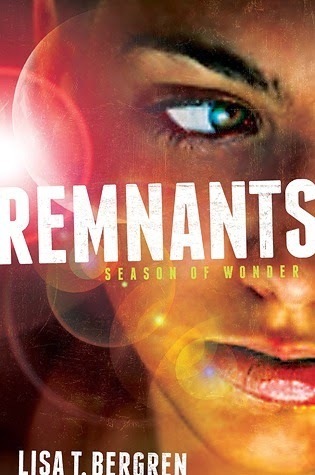
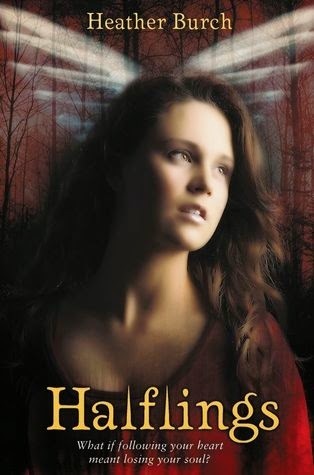
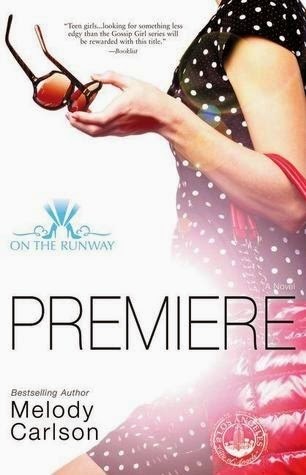
Remants: Season of Wonder by Lisa T. Bergren
The year is 2095. Gifted teens known as Remnants have been chosen and trained to act as humanity's last hope to rectify the horrors that are now part of everyday life. But the Sons of Sheol are determined to stop them. | Sequel: Season of Fire
Halflings by Heather Burch
When Nikki is targeted by an evil intent on harming her, she finds herself under the guardianship of three young men who call themselves Halflings. | Sequels: Guardian, Avenger
Premiere by Melody Carlson (On the Runway series)
When two sisters get their own fashion-focused reality television show, vivacious Paige is excited, but Erin, a Christian who is more interested in being behind the camera than in front of it, has problems with some of the things they are asked to do. | Sequels: Catwalk, Rendezvous, Spotlight, Glamour, Ciao
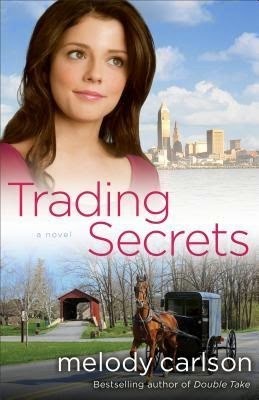
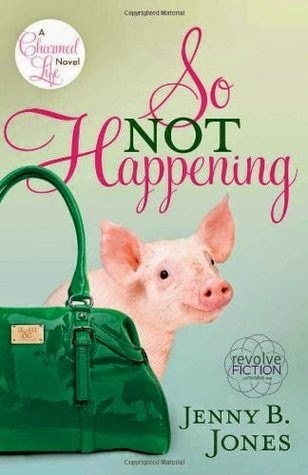
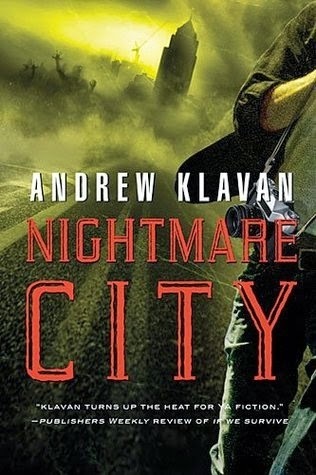
Trading Secrets by Melody CarlsonBack in fifth grade, Micah Knight got an Amish pen pal, and over the years, they've exchanged many letters--and many secrets. At age seventeen, Micah finally has the chance to meet her pen pal face-to-face. The only problem is that because of confusion about her name when the pen pals were assigned, her pen pal was a boy, Zach Miller. And all this time, Micah's never told Zach that she's actually a girl. While she wants nothing more than to experience life on Zach's Amish farm, she's afraid he'll hate her for deceiving him all these years. But she makes up her mind to face the music--and that's where the fun really begins.
So Not Happening by Jenny B. Jones
Forced to move from Manhattan to an Oklahoma farm when her mother remarries, sixteen-year-old Bella relies on her faith while investigating a deadly, secret organization for the school newspaper, as she slowly realizes how shallow and spoiled she has been. | Sequels: I'm So Sure, So Over My Head
Nightmare City by Andrew KlavanTom Harding only wants the truth. But the truth is becoming more dangerous with every passing minute. As a reporter for his high school newspaper, Tom Harding was tracking the best story of his life when, suddenly, his life turned very, very weird. He woke up one morning to find his house empty, his street empty, his whole town empty. Empty except for an eerie, creeping fog; and whatever creatures were slowly moving toward him through the fog. Now Tom's once-ordinary world has become something out of a horror movie.
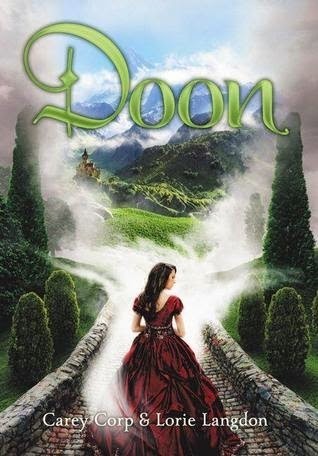
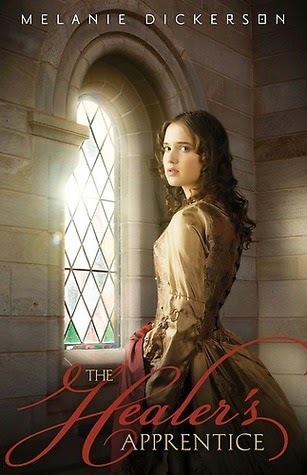
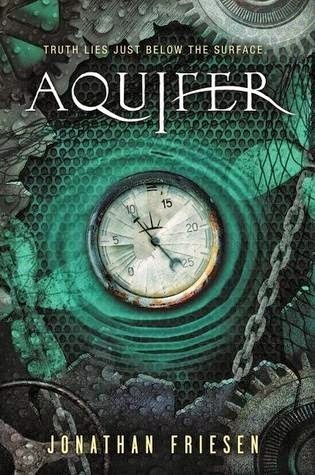
Doon by Carey Corp and Lorie Langdon
Embarking on a summer adventure in Scotland, best friends Veronica and Mackenna find romance and danger when they are transported to the kingdom of Doon, a hidden village that appears once every 100 years. Inspired by the musical Brigadoon. | Sequel: Destined for Doon
The Healer's Apprentice by Melanie Dickerson
In this story loosely based on the Sleeping Beauty fairy tale, seventeen-year-old Rose, a healer's apprentice, falls in love with the betrothed Lord Hamlin, who is seeking the sorcerer who cursed his future bride. | Sequels: The Fairest Beauty, The Merchant's Daughter, The Captive Maiden, The Princess Spy
Aquifer by Jonathan Friesen
In 2250, water is scarce and controlled by tyrants, but when sixteen-year-old Luca descends to the domain of the Water Rats, he meets one who captures his heart and leads him to secrets about a vast conspiracy, and about himself.
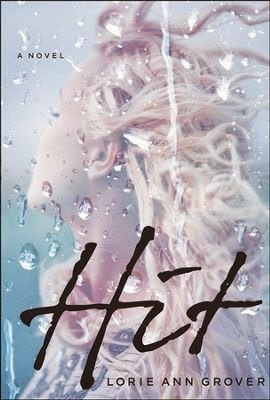
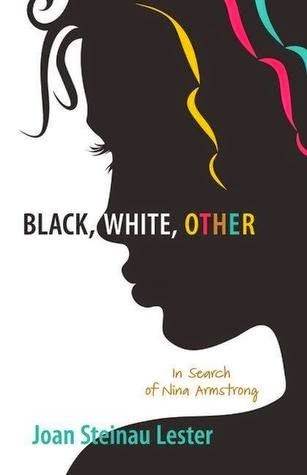
A Girl Named Mister by Nikki Grimes
A pregnant teenager finds support and forgiveness from God through a book of poetry presented from the Virgin Mary's perspective.
Hit by Lorie Ann Grover
High school senior Sarah takes a poetry class led by Mr. Haddings, a student teacher from the nearby University of Washington, and finds herself using her poetry journal to subtly declare her feelings for him, but everything changes when she is hit by a car.
Black, White, Other by Joan Steinau Lester
Twenty miles from Oakland, California, where fires have led to racial tension, multi-racial fifteen-year-old Nina faces the bigotry of long-time friends, her parents' divorce, and her brother's misbehavior, while learning of her great-great grandmother Sarah's escape from slavery.
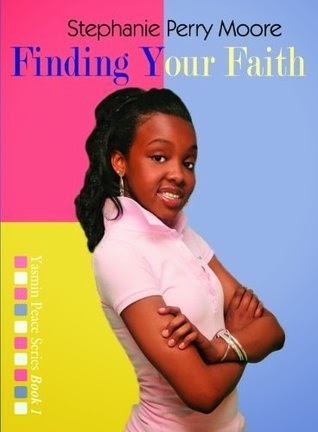
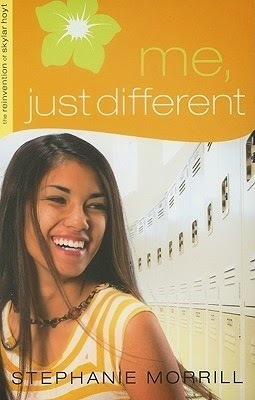
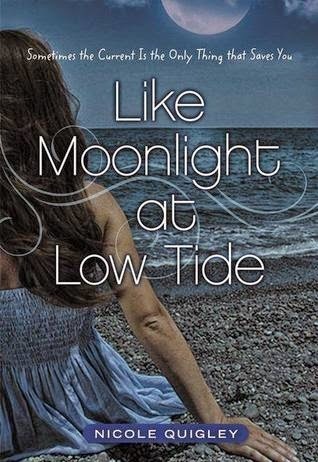
Finding Your Faith by Stephanie Perry Moore
Thirteen-year-old triplet Yasmin tries to find solace in prayer while helping her family recover from her older brother's suicide, as well as dealing with all of the drama of middle school and life in the projects. | Sequels: Believing in Hope, Experiencing the Joy, Learning to Love, Enjoying True Peace
Me, Just Different by Stephanie Morrill
An incident at a summer party and major family crises have high school senior Skylar Hoyt rethinking her way of life, and with the help of a new boy at school and a youth coach at church, she begins to find her true self.
Like Moonlight at Low Tide by Nicole Quigley
When high school junior Melissa Keiser returns to her hometown of Anna Maria Island, Florida, she has one goal, to hide from the bullies who had convinced her she was the ugliest girl in school. But when she is caught sneaking into a neighbor's pool at night, everything changes.
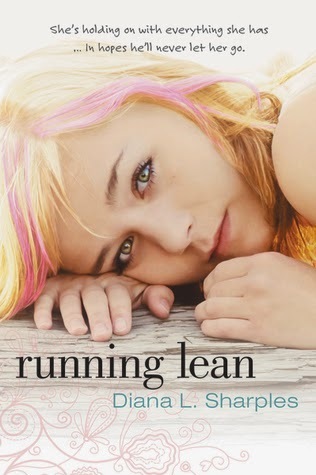
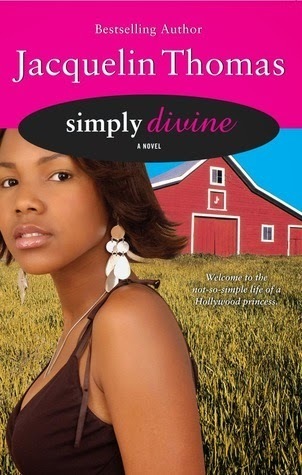
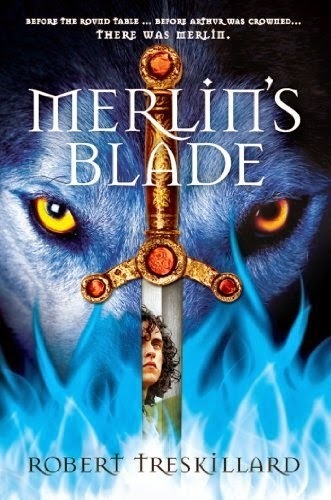
Running Lean by Diana Sharples
Told from their separate viewpoints, Calvin Greenlee copes with grief over his brother's recent death by racing his vintage Yamaha on rural North Carolina streets while his girlfriend, Stacey Youngblood, battles anexoria, and their relationship may not survive the strain.
Simply Divine by Jacquelin Thomas
After a family catastrophe, glamorous Hollywood teenager Divine goes to live with devout relatives in Georgia, where she learns the importance of family and finds strength by turning to God. | Sequels: Divine Confidential, Divine Secrets, Divine Match-Up
Merlin's Blade by Robert Treskillard
When a meteorite crashes near a small village in fifth-century Britain, it brings with it a mysterious black stone that bewitches anyone who comes in contact with its glow---a power the druids hope to use to destroy King Uthur's kingdom, as well as the new Christian faith. The only person who seems immune is a young, shy, half-blind swordsmith's son named Merlin. As his family, village, and even the young Arthur, are placed in danger, Merlin must face his fears and his blindness to take hold of the role God ordained for him. | Sequels: Merlin's Shadow, Merlin's Nightmare
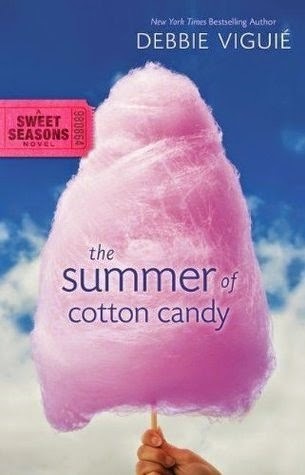
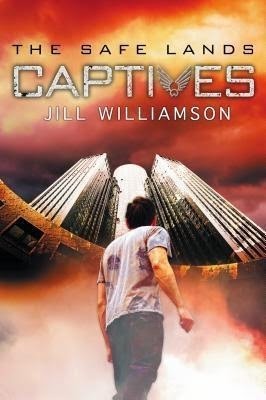
The Summer of Cotton Candy by Debbie Viguie
Forced by her father to get a summer job, seventeen-year-old Candace makes the most of selling cotton candy in an amusement park, despite a botched nametag, vindictive co-workers, lewd patrons, and growing distant from her best friend. | Sequels: The Fall of Candy Corn, The Winter of Candy Canes, The Spring of Candy Apples
Captives by Jill Williamson
In a dystopian future, most of the population is infected with a plague. The exceptions are those who live outside the Safe Land's city walls. When a mutation in the plague sends city enforcers looking for the uninfected, Levi's village is raided. While the attack leaves many dead, Levi's fiancee is being held captive. Levi launches a war against the city in an attempt to free her before it's too late. | Sequels: Outcasts, Rebels






 Related StoriesSocioeconomic Class in Contemporary YA Lit: Where Are The Poor Teens? Guest Post by Librarian Faythe ArrendondoGet Genrefied: Gothic FictionGet Genrefied: Climate Fiction (Cli-Fi)
Related StoriesSocioeconomic Class in Contemporary YA Lit: Where Are The Poor Teens? Guest Post by Librarian Faythe ArrendondoGet Genrefied: Gothic FictionGet Genrefied: Climate Fiction (Cli-Fi)
Introduction
In general, Christian fiction encompasses those stories that present a Christian worldview. This definition is really broad, but deliberately so. Often there will be explicit mention of God, Jesus, the Bible, sin and redemption, and so on, and the protagonist's journey will be overtly spiritual. But that's not always the case. Sometimes the focus is more allegorical (think Narnia) or the Christian ideology is subtler and conveyed more through character actions rather than deliberate mention of religious tenets. It can also be any genre under the sun: realistic, contemporary, historical, fantasy, science fiction, and so on. Because Christian fiction can be done with such a light touch, sometimes it's unclear whether a certain book should truly be called "Christian fiction." For example, there's a lot of debate over whether Tolkien's Lord of the Rings is Christian fiction (source). This also makes it really important to be able to recognize Christian fiction by its publishing house or author, since it's not always apparent from the book blurb.
Christian fiction is huge in the adult market. If you work in a public library, you've no doubt seen the hordes of Amish fiction that readers can't seem to get enough of (referred to as the "bonnet brigade" by one of my co-workers). It's not just Amish fiction though; it's also books like Left Behind or Karen Kingsbury's hugely popular novels. Christian fiction also encompasses some specific subgenres such as Catholic or Mormon fiction, which can be hugely popular among their intended audience. Christian adult fiction is sometimes referred to as "inspirational fiction," but I haven't seen that term used as much for teen novels. It does give a good idea of some of the appeal behind these books though: they're meant to uplift and inspire. Christian fiction in general also doesn't seem to be as widespread in the teen realm, but there's a definite readership for it.
In my experience, the teens who seek out Christian fiction are those who want to see their Christian values reflected in the books they read. Often, these values are quite conservative - socially, politically, and religiously - but not always. Christian fiction reads tend to be gentler reads, with less violence, sex, and foul language - but again, not always. Often the assumption is that the parents foist these books on their kids, but I find that teens also want them without any prompting from their parents. Christian teens whose religion is a big part of their lives are drawn to stories featuring protagonists whose religious beliefs mirror their own. I'm reminded of this piece written a few years ago about the seeming lack of religion or religious protagonists in YA. Christian fiction helps fill this gap.
Because Christian fiction ranges from very message-heavy to very subtly religious, it has the ability to attract a wide range of readers, and publishers are trying to capitalize on that. Blink, a new imprint of Zondervan launched in 2013, aims to publish YA Christian fiction "for anyone, regardless of faith." Their About page on their website doesn't even mention the word Christian anywhere. The YA bloggers at Redeemed Reader discussed a few of Blink's first titles (part one, part two), giving their opinions on the stories as Christian fiction and whether they thought the books would appeal to non-Christians. Those two posts are also a great way to get an idea of what Christian fiction means to teens who read it regularly.
Resources
As I mentioned above, recognizing Christian fiction from a book blurb isn't always easy. Look for specific publishers/imprints and authors to clue you in.
Publishers/Imprints:
Baker Publishing Group, including Bethany House and RevellHarperCollins Christian Publishing, which includes Blink, Thomas Nelson, and Zondervan/Zonderkidz Tyndale HouseWaterbrook Multnomah, including Waterbrook Press and Multnomah BooksMoody Publishers including Moody UrbanPopular YA Christian Fiction Authors:
Ted DekkerMelody CarlsonDonita K. PaulMelanie DickersonG. P. TaylorAndrew KlavanJenny B. JonesRobin Jones GunnStephanie Perry Moore Adult author Beverly Lewis has also written some YA Christian fiction.Of course, the above list is only a few of the authors writing YA Christian fiction today. Many of these authors have compiled much larger, more exhaustive lists, some of which I've linked to below.
On the Web:
Author Jill Williamson maintains a website called Novel Teen that aims to help YA readers find great Christian fiction books. She also has a huge list of recommended authors. Similarly, popular adult author Karen Kingsbury has a great list of YA Christian fiction authors at a website she runs called Family Fiction.On the blog front, Redeemed Reader is a great resource, as is Sherry Early's blog, Semicolon. (Sherry is a Cybils panelist this year in the Elementary/Middle Grade speculative fiction category.)The Christy Awards give annual awards to Christian books in a variety of categories. They do have a YA category, though it's not always awarded (presumably because it doesn't get the required ten entries). Books The books on the list below have all been published within the last five years or so and are generally regarded as Christian fiction. Descriptions are from WorldCat. A lot of YA publishing is very white and straight, but Christian fiction seems to be even more so. See this blog post on the topic. LGBT Christian fiction, in particular, is tough to find, and that is no doubt due - at least in part - to the more conservative type of Christian fiction that dominates the market. LGBT-friendly Christian fiction may be best found outside the genre - in books that may not explicitly state they're Christian, but still have a Christian feel. If you know of some titles that would help diversify this list, please let us know in the comments.



Remants: Season of Wonder by Lisa T. Bergren
The year is 2095. Gifted teens known as Remnants have been chosen and trained to act as humanity's last hope to rectify the horrors that are now part of everyday life. But the Sons of Sheol are determined to stop them. | Sequel: Season of Fire
Halflings by Heather Burch
When Nikki is targeted by an evil intent on harming her, she finds herself under the guardianship of three young men who call themselves Halflings. | Sequels: Guardian, Avenger
Premiere by Melody Carlson (On the Runway series)
When two sisters get their own fashion-focused reality television show, vivacious Paige is excited, but Erin, a Christian who is more interested in being behind the camera than in front of it, has problems with some of the things they are asked to do. | Sequels: Catwalk, Rendezvous, Spotlight, Glamour, Ciao



Trading Secrets by Melody CarlsonBack in fifth grade, Micah Knight got an Amish pen pal, and over the years, they've exchanged many letters--and many secrets. At age seventeen, Micah finally has the chance to meet her pen pal face-to-face. The only problem is that because of confusion about her name when the pen pals were assigned, her pen pal was a boy, Zach Miller. And all this time, Micah's never told Zach that she's actually a girl. While she wants nothing more than to experience life on Zach's Amish farm, she's afraid he'll hate her for deceiving him all these years. But she makes up her mind to face the music--and that's where the fun really begins.
So Not Happening by Jenny B. Jones
Forced to move from Manhattan to an Oklahoma farm when her mother remarries, sixteen-year-old Bella relies on her faith while investigating a deadly, secret organization for the school newspaper, as she slowly realizes how shallow and spoiled she has been. | Sequels: I'm So Sure, So Over My Head
Nightmare City by Andrew KlavanTom Harding only wants the truth. But the truth is becoming more dangerous with every passing minute. As a reporter for his high school newspaper, Tom Harding was tracking the best story of his life when, suddenly, his life turned very, very weird. He woke up one morning to find his house empty, his street empty, his whole town empty. Empty except for an eerie, creeping fog; and whatever creatures were slowly moving toward him through the fog. Now Tom's once-ordinary world has become something out of a horror movie.



Doon by Carey Corp and Lorie Langdon
Embarking on a summer adventure in Scotland, best friends Veronica and Mackenna find romance and danger when they are transported to the kingdom of Doon, a hidden village that appears once every 100 years. Inspired by the musical Brigadoon. | Sequel: Destined for Doon
The Healer's Apprentice by Melanie Dickerson
In this story loosely based on the Sleeping Beauty fairy tale, seventeen-year-old Rose, a healer's apprentice, falls in love with the betrothed Lord Hamlin, who is seeking the sorcerer who cursed his future bride. | Sequels: The Fairest Beauty, The Merchant's Daughter, The Captive Maiden, The Princess Spy
Aquifer by Jonathan Friesen
In 2250, water is scarce and controlled by tyrants, but when sixteen-year-old Luca descends to the domain of the Water Rats, he meets one who captures his heart and leads him to secrets about a vast conspiracy, and about himself.


A Girl Named Mister by Nikki Grimes
A pregnant teenager finds support and forgiveness from God through a book of poetry presented from the Virgin Mary's perspective.
Hit by Lorie Ann Grover
High school senior Sarah takes a poetry class led by Mr. Haddings, a student teacher from the nearby University of Washington, and finds herself using her poetry journal to subtly declare her feelings for him, but everything changes when she is hit by a car.
Black, White, Other by Joan Steinau Lester
Twenty miles from Oakland, California, where fires have led to racial tension, multi-racial fifteen-year-old Nina faces the bigotry of long-time friends, her parents' divorce, and her brother's misbehavior, while learning of her great-great grandmother Sarah's escape from slavery.



Finding Your Faith by Stephanie Perry Moore
Thirteen-year-old triplet Yasmin tries to find solace in prayer while helping her family recover from her older brother's suicide, as well as dealing with all of the drama of middle school and life in the projects. | Sequels: Believing in Hope, Experiencing the Joy, Learning to Love, Enjoying True Peace
Me, Just Different by Stephanie Morrill
An incident at a summer party and major family crises have high school senior Skylar Hoyt rethinking her way of life, and with the help of a new boy at school and a youth coach at church, she begins to find her true self.
Like Moonlight at Low Tide by Nicole Quigley
When high school junior Melissa Keiser returns to her hometown of Anna Maria Island, Florida, she has one goal, to hide from the bullies who had convinced her she was the ugliest girl in school. But when she is caught sneaking into a neighbor's pool at night, everything changes.



Running Lean by Diana Sharples
Told from their separate viewpoints, Calvin Greenlee copes with grief over his brother's recent death by racing his vintage Yamaha on rural North Carolina streets while his girlfriend, Stacey Youngblood, battles anexoria, and their relationship may not survive the strain.
Simply Divine by Jacquelin Thomas
After a family catastrophe, glamorous Hollywood teenager Divine goes to live with devout relatives in Georgia, where she learns the importance of family and finds strength by turning to God. | Sequels: Divine Confidential, Divine Secrets, Divine Match-Up
Merlin's Blade by Robert Treskillard
When a meteorite crashes near a small village in fifth-century Britain, it brings with it a mysterious black stone that bewitches anyone who comes in contact with its glow---a power the druids hope to use to destroy King Uthur's kingdom, as well as the new Christian faith. The only person who seems immune is a young, shy, half-blind swordsmith's son named Merlin. As his family, village, and even the young Arthur, are placed in danger, Merlin must face his fears and his blindness to take hold of the role God ordained for him. | Sequels: Merlin's Shadow, Merlin's Nightmare


The Summer of Cotton Candy by Debbie Viguie
Forced by her father to get a summer job, seventeen-year-old Candace makes the most of selling cotton candy in an amusement park, despite a botched nametag, vindictive co-workers, lewd patrons, and growing distant from her best friend. | Sequels: The Fall of Candy Corn, The Winter of Candy Canes, The Spring of Candy Apples
Captives by Jill Williamson
In a dystopian future, most of the population is infected with a plague. The exceptions are those who live outside the Safe Land's city walls. When a mutation in the plague sends city enforcers looking for the uninfected, Levi's village is raided. While the attack leaves many dead, Levi's fiancee is being held captive. Levi launches a war against the city in an attempt to free her before it's too late. | Sequels: Outcasts, Rebels







 Related StoriesSocioeconomic Class in Contemporary YA Lit: Where Are The Poor Teens? Guest Post by Librarian Faythe ArrendondoGet Genrefied: Gothic FictionGet Genrefied: Climate Fiction (Cli-Fi)
Related StoriesSocioeconomic Class in Contemporary YA Lit: Where Are The Poor Teens? Guest Post by Librarian Faythe ArrendondoGet Genrefied: Gothic FictionGet Genrefied: Climate Fiction (Cli-Fi)
Published on December 09, 2014 22:00
December 8, 2014
A Few Cybils Reads - Part VIII
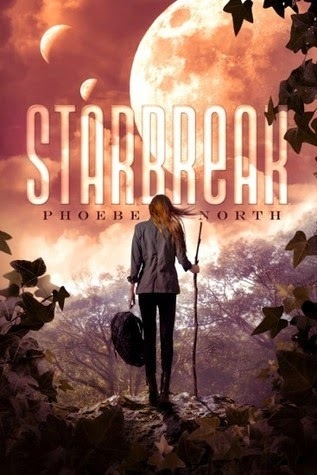 Starbreak
by Phoebe North
Starbreak
by Phoebe North This is the sequel to North’s debut, Starglass , and picks up right where the first book left off. Terra and a few other humans flee the chaos of the ship and make it to the planet below, which they know by now is already inhabited. Much to Terra’s surprise, they run into Aleksandra, the captain’s murderous daughter, who leads the rebels. They’re all eventually captured by the aliens that live on the planet, and Terra finally gets a chance to meet the alien boy she’s been literally dreaming about for months – it turns out he’s the translator between humans and aliens. The culture clash between the humans and the aliens is as fractious as you’d expect. It’s unclear whether the aliens will allow the humans to live on the planet – or if they’ll exile them to space once more.
I’ve long wanted more alien books where the aliens are less humanoid and more…something else. Starbreak fulfills this desire and tells a fascinating story to boot. While the first book was relegated entirely to the ship of humans, the sequel takes us onto an alien planet peopled with two different species of sentient creatures. They’re somewhat humanoid in that they speak through their mouths and walk on two legs, but they’re plant-based rather than animal-based. The idea of sentient plants is so cool to me, and I loved seeing how North built upon it. For example, one species of alien is carnivorous, like a Venus fly trap, whereas the other subsists on sun and water alone. The two species of aliens also have a unique relationship with each other, unlike anything on Earth (at least among humans). Of course, this story is also about human Terra, and it is in this book that she truly finds her voice and comes into her own. It’s a love story as well, a sweet one and a weird one.
All books about humans meeting aliens can be read as a metaphor for different human cultures first interacting with each other, and Starbreak is no different. It would take a shallow reader not to note the parallels, but this is not a message-driven book that wants you to Learn a Lesson. It’s a character-driven story imbued with human truth and a lot of creativity, solidly science fiction but always relatable. It would be a great readalike for fans of Beth Revis’ Shades of Earth (the best book in that trilogy, in my opinion) or perhaps Cecil Castellucci’s Tin Star , another book where a human finds herself alone among aliens.
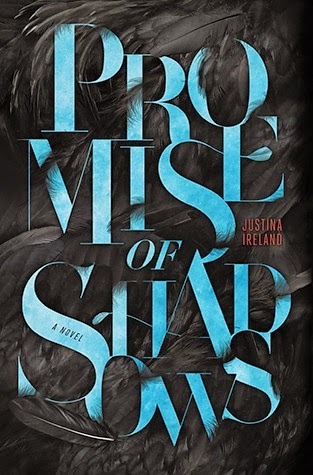 Promise of Shadows
by Justina Ireland
Promise of Shadows
by Justina Ireland Zephyr is a harpy, and she’s been banished to Tartarus (sort of like Hell) for exacting revenge against the god who killed her sister. The thing is, she shouldn’t have been able to kill a god in the first place. This ability indicates that Zephyr may be the long-lost Nyx, able to use dark magic and protect the harpies and other half-god beings from gods like Hera who mean to wipe them out. First Zephyr has to escape Tartarus, which she does with the help of a long-lost (and hot) childhood friend. Then she has to accept this destiny, not an easy thing to do for someone who is a coward (a refreshing character trait. Being brave is hard and doesn’t come easy for most of us).
Ireland’s writing is smooth and easy to read – and I mean that in a good way. I read this book coming off a string of duds and it was so refreshing to finally read something well-written and competently structured. It’s not hugely different in premise or plot from the scads of other mythology-inspired paranormal reads out there, but it’s done quite well and features a black protagonist, helping to diversify a genre that is too often lily white. Zephyr feels like her own person, not an everygirl – she’s not very brave, tends to run from fights, and is pretty bad at school. This makes for a satisfying character arc when she finally does learn how to be the Nyx (because you knew she would, right?). Ireland takes traditional Greek mythology and builds on it, weaving many different elements together into an interesting whole. The story is action-packed with a side of romance (rather than vice versa). Ancillary characters are well-drawn as well. It’s just a good book in every way. I can see it having lots of appeal for readers who can’t get enough of Greek mythology; it would be a natural next read for fans of Percy Jackson who are ready for something a little older.
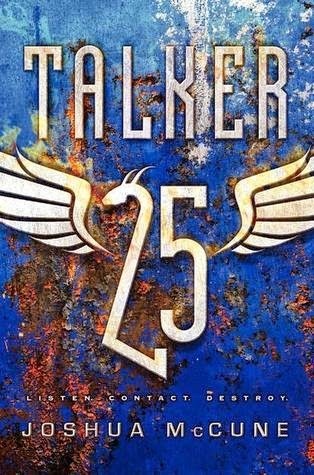 Talker 25
by Joshua McCune
Talker 25
by Joshua McCuneMelissa lives in a country much changed from the one we know. Dragons have terrorized the people for years, but humans have finally achieved a tenuous peace – they’ve hunted the most violent dragons to their deaths or exile, and have put the rest on reservations. When Melissa and her friends go to one of these reservations as a prank, it sets off a chain of events that will utterly change her life. For starters, she learns she can talk to dragons with her mind. Then a terrible dragon attack destroys Melissa’s town, and she’s rescued by dragon sympathizers, usually called terrorists by everyone else. This encompasses the first part of the book, where Melissa realizes that a lot of what she’s been told about the dragons is wrong. The second part involves Melissa being captured by the government and exploited for her telepathic abilities. She’s forced to trick dragons to their deaths, and sometimes she’s forced to kill them herself.
I wasn’t crazy about this one. I’ve always been a bit tepid toward dragons. I loved Pern, but nothing dragon-related since then has really grabbed me. The premise of Talker 25 – that some humans can communicate with dragons telepathically – is interesting, but the execution was pretty jumbled. I never got a clear idea of what exactly the dragons had done to start such a war, which meant I had no context for the humans’ fight against them. It seems like McCune just assumed that we’d know humans and dragons had been locked in a deadly fight for years, but I never figured out why. There’s some stuff about a reality show thrown in that feels odd and out of place, too. I read the whole thing feeling a little lost. The first part of the book I mostly felt mystified; the second part, where Melissa is in captivity, I mostly felt ill. It’s quite violent, with several scenes of dragon torture, some committed by Melissa herself under duress. There’s one scene in particular where McCune details just how many strokes it takes to decapitate one of Melissa’s old dragon friends (hint: it’s a lot). It felt too drawn out and a little lurid. Recommended for readers who can’t get enough of dragons – and can stomach a lot.
All books borrowed from my library.







 Related StoriesA Few Cybils Reads - Part VIA Few Cybils Reads - Part IVA Few Cybils Reads - Part VII (Audiobook Edition)
Related StoriesA Few Cybils Reads - Part VIA Few Cybils Reads - Part IVA Few Cybils Reads - Part VII (Audiobook Edition)
Published on December 08, 2014 22:00
December 7, 2014
"Best of 2014" in YA Fiction List Break Down
Every year, I like to dive into the "best of" lists and look at the similarities and differences between and among the lists. More, I think it's worthwhile to dig into what the books that comprise these lists do or don't have within them -- how diverse are they, how are they representing sexuality, what sort of gender make up are the characters and authors, and so forth. Because the "best of" lists offer a glimpse into the year of reading for YA, this is an interesting and worthwhile way to see what is and isn't happening.
This is the fourth year I've done this, and previous data sets can be found here, here, and here. I do plan on looking through them all and comparing across years, since I am curious whether things are looking any differently now in 2014 than they were in 2011. Look for that in the next week or so.
To look at the numbers, I broke apart the "best of" YA lists from the following professional publications: Kirkus, Horn Book, School Library Journal, and Publishers Weekly. In previous years, I also used Library Journal's lists -- first a "Best YA" list, then a "Best YA for Adult Readers" list -- but they didn't have one this year. From those lists, I pulled out only the YA fiction, meaning that they were titles designated for those readers 12-18. I did not include graphic memoirs, though I did include graphic novels when they were fiction. In the past I've eliminated graphic novels, but this year there were only two, so I kept them. This led to a total of 55 titles being tallied in the data. There were 59 authors considered here, as well. I included translators and illustrators in the author category because their work is as important and worth considering. When I get into the charts and designations, there will be further notes about this, as I could not track down information I'd hoped to and had to leave it out in some places.
Using my own knowledge from reading the books or reviews, I determined whether books featured a main character or main arc that included LGBTQ themes. I double-checked that data with Malinda Lo, who will be posting her 2014 round-up of the year in LGBTQ YA this week. I also looked at whether main characters were people of color or an author was a person of color, as determined through my own reading, reviews, and/or easily researched information. I did have to ask about a couple books and authors, and that information was verified for me. In addition to these analytical pieces, I've made notes in my data where other elements of diversity were part of a story; this includes mental illness, disabilities, minor roles for characters of color, and so forth. I did not tabulate this data, but it is all available to look at in my giant spreadsheet. Because writing out titles would make this post very, very long, I encourage having that open while looking at the data, as it'll make referencing which books were counted where easier.
All information about starred reviews came through Jen J's exceptionally well-done spreadsheet. There is one note to make about this, which is that I also went through Horn Book's January/February starred reviews to be completist about it, which led to one title on this list having an additional star yet to be noted on her spreadsheet.
As always, caveats: none of this data means anything. I've not tried to draw conclusions or suggest certain things about the books that popped up on these lists. Errors here in terms of counting, in how I've marked books LGBTQ or POC are my own, and so forth, are all my own. Since I haven't read all of these books, some of these are educated guesses.
Now...what do those "best of 2014" YA fiction lists look like this year?
Gender Representation In "Best Of" Lists
When it comes to male and female authors, who has more slots on the "best of" lists?

Out of the 59 authors represented, 18 were men and 41 were female. This isn't a surprising ratio at all, though it certainly looks a lot different than the ratio we see on the New York Times Bestsellers List. While I'm not going to draw comparisons in this post, I can say that this ratio is smaller than in previous years of looking at this data -- there are more men represented in 2014 than in previous years.
It's really challenging to look at how main character gender breaks down, but I gave it a go. To make it a little easier, I've broken the data into three pieces: male main characters, female main characters, and a third segment, cast of characters. For books with two main characters alternating voices, they've been counted in their respective categories. For books with more than two main characters -- How It Went Down and The Unfinished Life of Addison Stone, for example -- I've put them into the cast of characters category. Those books all featured multiple narrators, multiple "main" voices, and both male and female perspectives. I counted a total of 63 main characters ("cast" was counted as a single number here) and the breakdown looks like this:

There were a total of 37 main characters who were female, 22 who were male, and 4 books featured a cast of each. For what many like to believe of YA being a "female dominated" category, these numbers really do not suggest that. These "best of" lists represent a slice of YA, of course, but they represent a vetted and respected slice of YA -- one professionals deem to be the most solid or remarkable of the year (or as the case might be in some places, the books that had really nice marketing budgets and got into the right hands). There were more female-driven narrators for sure, but they were not entirely out of line with male narratives here.
Last year, I wondered if the perspective was that male-led narratives were "better" or more respected than female-driven ones. This is something I'm still curious about, given how much talk there is that there aren't books out there with male voices or that there aren't male YA authors. Both of those claims are false, as anyone who knows anything about YA can tell you, but looking at the hard numbers from these lists only confirms those claims aren't truths. There ARE more female led books, but it doesn't mean male led books don't exist. They make up 35% of the "best of" lists this year!
Debut Authors
How good are the chances of making a "best of" list when you're a debut author? Note that all four of these lists appeared before YALSA's announcement of the five Morris finalists. That, I think, is a good thing, since there could be no influence.
As always, my definition of "debut" is purist. This is a first book. My one exception to this is the same one made for the Morris -- if it's an author's first book in English for a US audience, I consider it a debut. This was the case in one title included. I included authors as "debut" if they had published in or edited an anthology in the past, as that was the case in a couple of authors.

More than 1/4 of the books on this year's lists were written by debut authors, for a total of 16 books written by debuts. This is a really nice showing of new voices within "best of" lists. It's been my suspicion this year has been a great one for debut authors, and I think that has been playing out in these lists, as well as other year-end round-ups.
What about gender of debut authors?

One-quarter of the debuts this year were male, while the rest were female. That breaks down into 4 men and 12 women.
Back to the note on Morris titles: of the books that landed on the Morris list, four out of five of them also appeared on the "best of" lists: The Story of Owen, The Strange and Beautiful Sorrows of Ava Lavender, Gabi, A Girl in Pieces, and The Carnival at Bray.
"Best Of" By Genre
Every year, this is the hardest breakdown for me, since genre is so fluid. How do you decide exactly what category a book belongs in if you haven't read it? Or even if you HAVE read it, the breakdowns can be really challenging. One thing is for sure, though: there are zero paranormal titles hanging with the "best of" crowd this year.
I took a stab at making these genres make sense, and from looking at the titles, my own reading knowledge, as well as other reviews, I pulled out eight main genres: realistic (which includes those books inexplicably set in the 90s, a trend that I have been over for a couple years now), science fiction, fantasy, horror/fantasy, mystery, historical, magical realism, and historical fantasy.
A caveat here: there are 56 titles being considered here, rather than just 55. Because Scott Westerfeld's Afterworlds could fall into either the realistic or the fantasy category, depending on the reader, I didn't want to make a call. I decided to include it in both.

Realistic fiction had a strong showing this year, but it's also a little bit deceiving. Because there were a number of subgenres of fantasy represented, it could easily be said that fantasy held its own, too. In fact, let's look at this genre breakdown as we collapse the subgenres into the larger one. All of the books within the "horror/fantasy" subgenre are more fantasy than they are realistic, so I'm putting them in that grouping.

And if I went ahead and made magical realism a subgenre of fantasy, then it looks like this:

Fantasy outpaced realistic fiction by one book. The two genres eclipsed science fiction, mystery, and the single, lone book in the historical fiction genre.
Frequency of "Best of" List Appearances
Was there a big spread of titles across this year's "best of" lists or did many titles end up on many lists? This is a little bit of a false category in that some of the publications -- Horn Book, for example -- had a very tiny number of titles that fit the criteria I set. Other publications, like Kirkus, had a big number of titles on their list that fit the criteria.
Some publications that put their lists out very early, like Publishers Weekly, always fascinate me because I wonder how much it may (or may not) influence the appearance of titles on other lists. In other words, is there a "first!" pride in naming a title the best? These numbers won't shed light on that, but they do show whether some titles were really popular among all of the "best" lists.
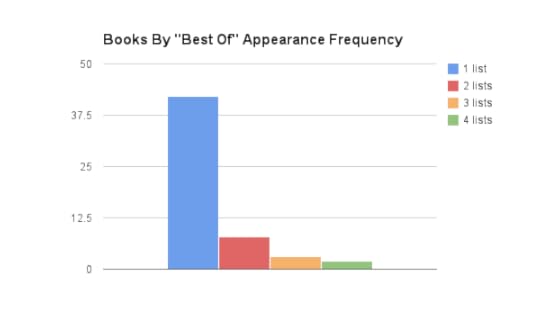
Only two books appeared on all four of the "best" lists -- We Were Liars by E Lockhart and This One Summer by Jillian and Mariko Tamaki. The vast majority of books landed on one list, and that list would be Kirkus's.
Out of curiosity, I wanted to know how the books on the "best of" list shook out when it came to starred reviews earned. I used Jen J's spreadsheet, as noted above, which includes starred reviews from Kirkus, Booklist, The Bulletin of the Center for Children's Books, School Library Journal, Publisher's Weekly, and Horn Book. That means titles have the chance to have up to six stars.

Most of the books on the "best of" list earned 1 or 2 starred reviews. Out of the 55 books, only two earned six stars: This One Summer and Glory O'Brien's History of the Future.
This One Summer by the Tamakis landed on all four lists and earned six starred reviews. It is, by this measure, the most decorated and distinguished YA novel in 2014.
As for the entire breakdown of starred reviews and list honors, here's the spreadsheet:

Sometimes the more stars earned means the more likely the book will appear on multiple "best of" lists and sometimes, it doesn't. In general, this year looked to be more spread out in terms of the titles being given a "best of" designation.
"Best of" By Publication Date
One really interesting thing I read in the reports by YALSA committee chairs for an upcoming board meeting was that books published in the latter half of the year had a distinct disadvantage when it came to being considered for the Morris award, which announces its finalists in early December. This is something I have always thought about, especially when it comes to these "best of" lists. While it's great to announce them in early November or even the first week of December, what about the books that are published later? Reviews are obviously reading all year long, but how easily would a smaller title from a smaller publisher with a not-so-huge marketing budget fall under the radar? Most people know that "big books" are published in the March - May range, as well as the September - October range. That's not a hard-and-fast rule nor universal, but spend a little time looking at publication frequency, budgets, when book publication dates change, and so forth, and you see the patterns.
Here's when the books published each month:

If you look at the first half of the year against the last half of the year, the divide is almost exactly even: 28 of the "best of" titles published between January and the end of June, while 27 published between July and December. October was the most frequent month -- how much is that due to fresh memory of titles when list-making time happens? There were zero books published in December on these lists, and there was only one title from the months of November and June.
Again, nothing can be said about this, but it is interesting to speculate.
"Best of" By Publisher
How diverse were the publishers represented on the lists? Did we see Candlewick doing really well, as seems to be the case every single year?
I've collapsed imprints into their bigger house, so First Second, Tor, and St Martins fall under Macmillan.

This chart is difficult to read, but breaking it into two charts throws off scaling, which is even more problematic. Everything to the right of Macmillan, which reaches 6 and is in dark blue, lands at one title each. These are primarily smaller publishers, like Pyr, Soho Teen, Holiday House, Algonquin, and so forth.
Penguin had the most representation on this year's lists, with 8 books, followed by Random House at 7, Macmillan at 6, and -- as always, this makes me so happy -- Candlewick had 5.
While Penguin and Random House are now one publishing house, I chose to keep them separate. Putting them together is really fascinating though: they certainly dominate then, with a total of 15 titles on the "best of" lists.
Collapsing the publishers down by whether they're a "Big 5/6" or smaller, the "Big 5/6" have a total of 32 titles on the list, while the mid-size and small publishers have 23. Not a bad split at all.
LGBTQ and POC Representation on "Best of" Lists
This was a watershed year for discussion of diversity in the publishing world. While it's always been there, this year, in comparison to prior years, it was a much bigger, more vocal discussion. But did it make any impact on the books on these lists?
It would be a tease to compare to years past in this post, but the long and the short of it is that the answer is no.
As noted above, I used my own knowledge, research, and consultation with Malinda Lo to pull out the books which featured main characters who identified as LGBTQ or which had significant story lines that involved LGBTQ themes or situations. Where Malinda doesn't count Sarah McCarry's About A Girl since it's not necessarily overt, I have included it, since I thought it was a big enough thread to merit inclusion. I do not look at author's sexuality when looking at LGBTQ because this is too difficult to gauge without knowing the authors -- it's not obvious, sexuality is fluid, and not all authors choose to self-identify in their bios or information available about them.
Out of the 55 books, a total of 6 books fit the LGBTQ criteria. That would be 10% of the list.
What about representation of racial diversity? Because finding information about authors and their racial backgrounds is easier, I fold them into the same category as I do main characters of color. For books where the author is a person of color and their main character is a person of color, I counted it only once. Some authors, whose background may be difficult to distinguish, I reached out to them or to those who know them for confirmation.
Out of the 55 books and 59 authors, there was a count of 14 writers/main characters of color. That's roughly 24%.
What about books that feature or are written by people of color that feature LGBTQ main characters or plot elements?
2.
It's still very straight and very white on the "best of" lists.
It's worth noting again, though, that some of the books DO feature secondary characters who aren't straight or aren't white; those have been noted in the spreadsheet.
Miscellaneous Data
Let's wrap this up with a couple more pieces of data that are interesting, even if they're not necessarily important ones.
First, there were a total of 49 books published as hardcovers, 3 published as paperback originals, and 3 published as split runs (meaning both hardcover and paperbacks published at the same time).
Three of the books were novels in verse, and I include Jenny Hubbard's And We Stay in this count, even though it's only partially in verse. I did not include Gabi, A Girl in Pieces, though it does include poetry in it. This list also had 3 graphic novels and 1 book in an "alternative" format -- The Unfinished Life of Addison Stone's interview-format made it worth putting into a category all of its own.
I've always looked at country of origin on these lists, too, as they often seem like they feature a lot of books by authors who aren't from the US. This year, there were a total of 40 authors who were from the US, and there were 18 from outside the US. I did not include information on one of the illustrators, as I could find nothing about her in my research and didn't want to make assumptions either way in terms of her country of origin (I did find enough to know other data about her, as reflected above).
Finally, I broke out books by whether or not they were stand alones or part of a series. There were 39 stand alone titles and 16 books that were part of a series. This included "loose" series, like Dirty Wings. Of the books in a series, I found where they fell within their series to be one of the most interesting pieces of data -- where you'd suspect almost entirely first or final books in a series to hit these "best of" lists, it turns out that this year was a good year for books in the middle of a series-in-progress. There was one book that was a final in a series, 10 that were first in a series, and 5 that fell somewhere in the middle.
So...What Now?
Nothing can be made from this data. It doesn't mean anything, especially pulled from its context. But nevertheless, it's interesting to look at and speculate upon because it does give a glimpse into the year of YA as deemed by professionals and experts on YA.
Were there any surprises in this data? Any titles that did or didn't make the lists that were curious?
One thing I keep wondering about and have zero explanation for -- and would love to read some theories about -- is why Andrew Smith's Grasshopper Jungle earned more acclaim from review journals and "best of" lists than his second release this year, 100 Sideways Miles, which was a title on the National Book Awards long list. I thought it was a more accomplished, literary, and full novel (not to mention it portrayed females as actual dynamic characters, rather than as props for use by the male heroes). It was surprising Smith didn't have both books pop up on these "best of" lists.







 Related Stories"Best of 2013" YA List Breakdown, Part 2"Best of 2013 YA" List Breakdown, Part 12015 Contemporary YA Fiction For Your Radar
Related Stories"Best of 2013" YA List Breakdown, Part 2"Best of 2013 YA" List Breakdown, Part 12015 Contemporary YA Fiction For Your Radar
This is the fourth year I've done this, and previous data sets can be found here, here, and here. I do plan on looking through them all and comparing across years, since I am curious whether things are looking any differently now in 2014 than they were in 2011. Look for that in the next week or so.
To look at the numbers, I broke apart the "best of" YA lists from the following professional publications: Kirkus, Horn Book, School Library Journal, and Publishers Weekly. In previous years, I also used Library Journal's lists -- first a "Best YA" list, then a "Best YA for Adult Readers" list -- but they didn't have one this year. From those lists, I pulled out only the YA fiction, meaning that they were titles designated for those readers 12-18. I did not include graphic memoirs, though I did include graphic novels when they were fiction. In the past I've eliminated graphic novels, but this year there were only two, so I kept them. This led to a total of 55 titles being tallied in the data. There were 59 authors considered here, as well. I included translators and illustrators in the author category because their work is as important and worth considering. When I get into the charts and designations, there will be further notes about this, as I could not track down information I'd hoped to and had to leave it out in some places.
Using my own knowledge from reading the books or reviews, I determined whether books featured a main character or main arc that included LGBTQ themes. I double-checked that data with Malinda Lo, who will be posting her 2014 round-up of the year in LGBTQ YA this week. I also looked at whether main characters were people of color or an author was a person of color, as determined through my own reading, reviews, and/or easily researched information. I did have to ask about a couple books and authors, and that information was verified for me. In addition to these analytical pieces, I've made notes in my data where other elements of diversity were part of a story; this includes mental illness, disabilities, minor roles for characters of color, and so forth. I did not tabulate this data, but it is all available to look at in my giant spreadsheet. Because writing out titles would make this post very, very long, I encourage having that open while looking at the data, as it'll make referencing which books were counted where easier.
All information about starred reviews came through Jen J's exceptionally well-done spreadsheet. There is one note to make about this, which is that I also went through Horn Book's January/February starred reviews to be completist about it, which led to one title on this list having an additional star yet to be noted on her spreadsheet.
As always, caveats: none of this data means anything. I've not tried to draw conclusions or suggest certain things about the books that popped up on these lists. Errors here in terms of counting, in how I've marked books LGBTQ or POC are my own, and so forth, are all my own. Since I haven't read all of these books, some of these are educated guesses.
Now...what do those "best of 2014" YA fiction lists look like this year?
Gender Representation In "Best Of" Lists
When it comes to male and female authors, who has more slots on the "best of" lists?

Out of the 59 authors represented, 18 were men and 41 were female. This isn't a surprising ratio at all, though it certainly looks a lot different than the ratio we see on the New York Times Bestsellers List. While I'm not going to draw comparisons in this post, I can say that this ratio is smaller than in previous years of looking at this data -- there are more men represented in 2014 than in previous years.
It's really challenging to look at how main character gender breaks down, but I gave it a go. To make it a little easier, I've broken the data into three pieces: male main characters, female main characters, and a third segment, cast of characters. For books with two main characters alternating voices, they've been counted in their respective categories. For books with more than two main characters -- How It Went Down and The Unfinished Life of Addison Stone, for example -- I've put them into the cast of characters category. Those books all featured multiple narrators, multiple "main" voices, and both male and female perspectives. I counted a total of 63 main characters ("cast" was counted as a single number here) and the breakdown looks like this:

There were a total of 37 main characters who were female, 22 who were male, and 4 books featured a cast of each. For what many like to believe of YA being a "female dominated" category, these numbers really do not suggest that. These "best of" lists represent a slice of YA, of course, but they represent a vetted and respected slice of YA -- one professionals deem to be the most solid or remarkable of the year (or as the case might be in some places, the books that had really nice marketing budgets and got into the right hands). There were more female-driven narrators for sure, but they were not entirely out of line with male narratives here.
Last year, I wondered if the perspective was that male-led narratives were "better" or more respected than female-driven ones. This is something I'm still curious about, given how much talk there is that there aren't books out there with male voices or that there aren't male YA authors. Both of those claims are false, as anyone who knows anything about YA can tell you, but looking at the hard numbers from these lists only confirms those claims aren't truths. There ARE more female led books, but it doesn't mean male led books don't exist. They make up 35% of the "best of" lists this year!
Debut Authors
How good are the chances of making a "best of" list when you're a debut author? Note that all four of these lists appeared before YALSA's announcement of the five Morris finalists. That, I think, is a good thing, since there could be no influence.
As always, my definition of "debut" is purist. This is a first book. My one exception to this is the same one made for the Morris -- if it's an author's first book in English for a US audience, I consider it a debut. This was the case in one title included. I included authors as "debut" if they had published in or edited an anthology in the past, as that was the case in a couple of authors.

More than 1/4 of the books on this year's lists were written by debut authors, for a total of 16 books written by debuts. This is a really nice showing of new voices within "best of" lists. It's been my suspicion this year has been a great one for debut authors, and I think that has been playing out in these lists, as well as other year-end round-ups.
What about gender of debut authors?

One-quarter of the debuts this year were male, while the rest were female. That breaks down into 4 men and 12 women.
Back to the note on Morris titles: of the books that landed on the Morris list, four out of five of them also appeared on the "best of" lists: The Story of Owen, The Strange and Beautiful Sorrows of Ava Lavender, Gabi, A Girl in Pieces, and The Carnival at Bray.
"Best Of" By Genre
Every year, this is the hardest breakdown for me, since genre is so fluid. How do you decide exactly what category a book belongs in if you haven't read it? Or even if you HAVE read it, the breakdowns can be really challenging. One thing is for sure, though: there are zero paranormal titles hanging with the "best of" crowd this year.
I took a stab at making these genres make sense, and from looking at the titles, my own reading knowledge, as well as other reviews, I pulled out eight main genres: realistic (which includes those books inexplicably set in the 90s, a trend that I have been over for a couple years now), science fiction, fantasy, horror/fantasy, mystery, historical, magical realism, and historical fantasy.
A caveat here: there are 56 titles being considered here, rather than just 55. Because Scott Westerfeld's Afterworlds could fall into either the realistic or the fantasy category, depending on the reader, I didn't want to make a call. I decided to include it in both.

Realistic fiction had a strong showing this year, but it's also a little bit deceiving. Because there were a number of subgenres of fantasy represented, it could easily be said that fantasy held its own, too. In fact, let's look at this genre breakdown as we collapse the subgenres into the larger one. All of the books within the "horror/fantasy" subgenre are more fantasy than they are realistic, so I'm putting them in that grouping.

And if I went ahead and made magical realism a subgenre of fantasy, then it looks like this:

Fantasy outpaced realistic fiction by one book. The two genres eclipsed science fiction, mystery, and the single, lone book in the historical fiction genre.
Frequency of "Best of" List Appearances
Was there a big spread of titles across this year's "best of" lists or did many titles end up on many lists? This is a little bit of a false category in that some of the publications -- Horn Book, for example -- had a very tiny number of titles that fit the criteria I set. Other publications, like Kirkus, had a big number of titles on their list that fit the criteria.
Some publications that put their lists out very early, like Publishers Weekly, always fascinate me because I wonder how much it may (or may not) influence the appearance of titles on other lists. In other words, is there a "first!" pride in naming a title the best? These numbers won't shed light on that, but they do show whether some titles were really popular among all of the "best" lists.

Only two books appeared on all four of the "best" lists -- We Were Liars by E Lockhart and This One Summer by Jillian and Mariko Tamaki. The vast majority of books landed on one list, and that list would be Kirkus's.
Out of curiosity, I wanted to know how the books on the "best of" list shook out when it came to starred reviews earned. I used Jen J's spreadsheet, as noted above, which includes starred reviews from Kirkus, Booklist, The Bulletin of the Center for Children's Books, School Library Journal, Publisher's Weekly, and Horn Book. That means titles have the chance to have up to six stars.

Most of the books on the "best of" list earned 1 or 2 starred reviews. Out of the 55 books, only two earned six stars: This One Summer and Glory O'Brien's History of the Future.
This One Summer by the Tamakis landed on all four lists and earned six starred reviews. It is, by this measure, the most decorated and distinguished YA novel in 2014.
As for the entire breakdown of starred reviews and list honors, here's the spreadsheet:

Sometimes the more stars earned means the more likely the book will appear on multiple "best of" lists and sometimes, it doesn't. In general, this year looked to be more spread out in terms of the titles being given a "best of" designation.
"Best of" By Publication Date
One really interesting thing I read in the reports by YALSA committee chairs for an upcoming board meeting was that books published in the latter half of the year had a distinct disadvantage when it came to being considered for the Morris award, which announces its finalists in early December. This is something I have always thought about, especially when it comes to these "best of" lists. While it's great to announce them in early November or even the first week of December, what about the books that are published later? Reviews are obviously reading all year long, but how easily would a smaller title from a smaller publisher with a not-so-huge marketing budget fall under the radar? Most people know that "big books" are published in the March - May range, as well as the September - October range. That's not a hard-and-fast rule nor universal, but spend a little time looking at publication frequency, budgets, when book publication dates change, and so forth, and you see the patterns.
Here's when the books published each month:

If you look at the first half of the year against the last half of the year, the divide is almost exactly even: 28 of the "best of" titles published between January and the end of June, while 27 published between July and December. October was the most frequent month -- how much is that due to fresh memory of titles when list-making time happens? There were zero books published in December on these lists, and there was only one title from the months of November and June.
Again, nothing can be said about this, but it is interesting to speculate.
"Best of" By Publisher
How diverse were the publishers represented on the lists? Did we see Candlewick doing really well, as seems to be the case every single year?
I've collapsed imprints into their bigger house, so First Second, Tor, and St Martins fall under Macmillan.

This chart is difficult to read, but breaking it into two charts throws off scaling, which is even more problematic. Everything to the right of Macmillan, which reaches 6 and is in dark blue, lands at one title each. These are primarily smaller publishers, like Pyr, Soho Teen, Holiday House, Algonquin, and so forth.
Penguin had the most representation on this year's lists, with 8 books, followed by Random House at 7, Macmillan at 6, and -- as always, this makes me so happy -- Candlewick had 5.
While Penguin and Random House are now one publishing house, I chose to keep them separate. Putting them together is really fascinating though: they certainly dominate then, with a total of 15 titles on the "best of" lists.
Collapsing the publishers down by whether they're a "Big 5/6" or smaller, the "Big 5/6" have a total of 32 titles on the list, while the mid-size and small publishers have 23. Not a bad split at all.
LGBTQ and POC Representation on "Best of" Lists
This was a watershed year for discussion of diversity in the publishing world. While it's always been there, this year, in comparison to prior years, it was a much bigger, more vocal discussion. But did it make any impact on the books on these lists?
It would be a tease to compare to years past in this post, but the long and the short of it is that the answer is no.
As noted above, I used my own knowledge, research, and consultation with Malinda Lo to pull out the books which featured main characters who identified as LGBTQ or which had significant story lines that involved LGBTQ themes or situations. Where Malinda doesn't count Sarah McCarry's About A Girl since it's not necessarily overt, I have included it, since I thought it was a big enough thread to merit inclusion. I do not look at author's sexuality when looking at LGBTQ because this is too difficult to gauge without knowing the authors -- it's not obvious, sexuality is fluid, and not all authors choose to self-identify in their bios or information available about them.
Out of the 55 books, a total of 6 books fit the LGBTQ criteria. That would be 10% of the list.
What about representation of racial diversity? Because finding information about authors and their racial backgrounds is easier, I fold them into the same category as I do main characters of color. For books where the author is a person of color and their main character is a person of color, I counted it only once. Some authors, whose background may be difficult to distinguish, I reached out to them or to those who know them for confirmation.
Out of the 55 books and 59 authors, there was a count of 14 writers/main characters of color. That's roughly 24%.
What about books that feature or are written by people of color that feature LGBTQ main characters or plot elements?
2.
It's still very straight and very white on the "best of" lists.
It's worth noting again, though, that some of the books DO feature secondary characters who aren't straight or aren't white; those have been noted in the spreadsheet.
Miscellaneous Data
Let's wrap this up with a couple more pieces of data that are interesting, even if they're not necessarily important ones.
First, there were a total of 49 books published as hardcovers, 3 published as paperback originals, and 3 published as split runs (meaning both hardcover and paperbacks published at the same time).
Three of the books were novels in verse, and I include Jenny Hubbard's And We Stay in this count, even though it's only partially in verse. I did not include Gabi, A Girl in Pieces, though it does include poetry in it. This list also had 3 graphic novels and 1 book in an "alternative" format -- The Unfinished Life of Addison Stone's interview-format made it worth putting into a category all of its own.
I've always looked at country of origin on these lists, too, as they often seem like they feature a lot of books by authors who aren't from the US. This year, there were a total of 40 authors who were from the US, and there were 18 from outside the US. I did not include information on one of the illustrators, as I could find nothing about her in my research and didn't want to make assumptions either way in terms of her country of origin (I did find enough to know other data about her, as reflected above).
Finally, I broke out books by whether or not they were stand alones or part of a series. There were 39 stand alone titles and 16 books that were part of a series. This included "loose" series, like Dirty Wings. Of the books in a series, I found where they fell within their series to be one of the most interesting pieces of data -- where you'd suspect almost entirely first or final books in a series to hit these "best of" lists, it turns out that this year was a good year for books in the middle of a series-in-progress. There was one book that was a final in a series, 10 that were first in a series, and 5 that fell somewhere in the middle.
So...What Now?
Nothing can be made from this data. It doesn't mean anything, especially pulled from its context. But nevertheless, it's interesting to look at and speculate upon because it does give a glimpse into the year of YA as deemed by professionals and experts on YA.
Were there any surprises in this data? Any titles that did or didn't make the lists that were curious?
One thing I keep wondering about and have zero explanation for -- and would love to read some theories about -- is why Andrew Smith's Grasshopper Jungle earned more acclaim from review journals and "best of" lists than his second release this year, 100 Sideways Miles, which was a title on the National Book Awards long list. I thought it was a more accomplished, literary, and full novel (not to mention it portrayed females as actual dynamic characters, rather than as props for use by the male heroes). It was surprising Smith didn't have both books pop up on these "best of" lists.







 Related Stories"Best of 2013" YA List Breakdown, Part 2"Best of 2013 YA" List Breakdown, Part 12015 Contemporary YA Fiction For Your Radar
Related Stories"Best of 2013" YA List Breakdown, Part 2"Best of 2013 YA" List Breakdown, Part 12015 Contemporary YA Fiction For Your Radar
Published on December 07, 2014 22:00
December 5, 2014
This Week on Book Riot & The Book Smugglers
This week, Kimberly and I were part of The Book Smuggler's annual Smugglivus celebration. We took the prompt a little differently this year, talking about 3 of our favorite books from this year, 3 books we're eager to read next year, and then we picked 3 books we read this year that we think each other should read. Here's what our picks are!
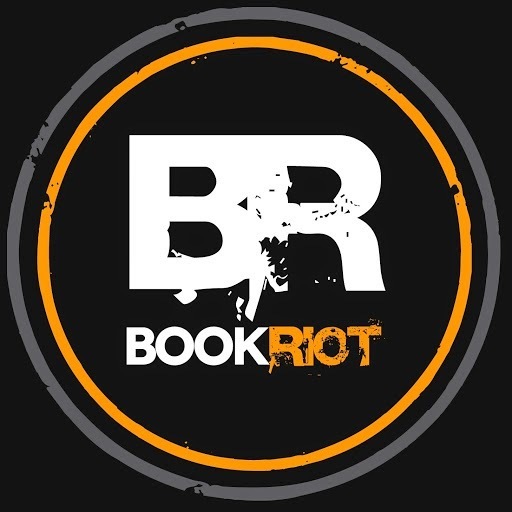
Over at Book Riot this week...
After writing a little bit about the cover redesign for Anne of Green Gables over here as part of my Toronto International Book Fest post, I had to look at other designs of the classic. Here are 6 different takes on the book's cover -- each unique and reaching a different audience. I put together a "starting/ending" post for YA in 2014. These are the books that people who want to catch up on their 2014 YA reading should check out, the books I think would be solid gifts for a YA reader, and what I think sort of depicted what YA looked like in 2014. This is a different take on the "best of," so there's some popular titles and some that were a little more under-the-radar.






 Related StoriesThis Week at Book RiotKelly's Top Five Posts of 2013: A Look Back
Related StoriesThis Week at Book RiotKelly's Top Five Posts of 2013: A Look Back

Over at Book Riot this week...
After writing a little bit about the cover redesign for Anne of Green Gables over here as part of my Toronto International Book Fest post, I had to look at other designs of the classic. Here are 6 different takes on the book's cover -- each unique and reaching a different audience. I put together a "starting/ending" post for YA in 2014. These are the books that people who want to catch up on their 2014 YA reading should check out, the books I think would be solid gifts for a YA reader, and what I think sort of depicted what YA looked like in 2014. This is a different take on the "best of," so there's some popular titles and some that were a little more under-the-radar.







 Related StoriesThis Week at Book RiotKelly's Top Five Posts of 2013: A Look Back
Related StoriesThis Week at Book RiotKelly's Top Five Posts of 2013: A Look Back
Published on December 05, 2014 22:00
December 4, 2014
Let's Move Beyond the Gender Binary: Guest Post by I. W. Gregorio
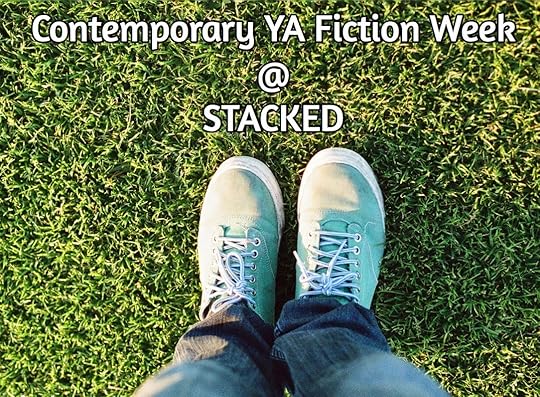
Since gender has been a topic through some of the posts this week -- and a topic we talk about frequently here at STACKED -- let's round out this week of contemporary YA with another post about gender. . . and about sex. Welcome to upcoming debut author I. W. Gregorio.
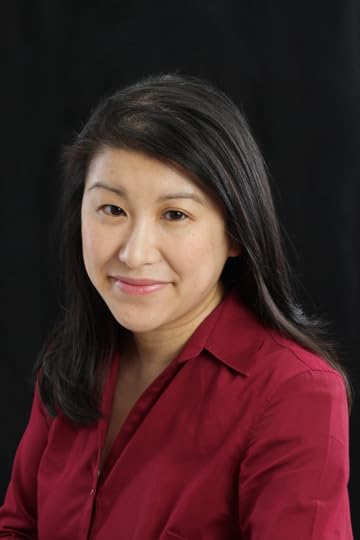
I. W. Gregorio is a practicing surgeon by day, masked avenging YA writer by night. After getting her MD, she did her residency at Stanford, where she met the intersex patient who inspired her debut novel, None of the Above (Balzer & Bray / HarperCollins, 4/28/15). She is a founding member of We Need Diverse Books™ and serves as its VP of Development. A recovering ice hockey player, she lives in Pennsylvania with her husband and two children. Find her online at www.iwgregorio.com, and on Twitter, Tumblr, Facebook and Instagram at @iwgregorio.
Anyone who’s ever walked down the aisles of a toy store knows that the gender binary is a monolith that is almost impossible to topple, and I admit freely to being someone who’s tried and failed. For the first two years of my daughter’s life, I clothed her preferentially in non-pink clothing. I gave away onesies and bibs that had the word “princess” on it (once, I even took scissors to cut them out). Instead of dolls, I got her Thomas the Tank Engine trains and Legos.
Then she started preschool, and she’s now a princess-loving, pink-wearing girlie girl who is begging for an American Girl doll for Christmas. Which is fine, except that I fear that her internalization of stereotyped “girliness” won’t stop at toys and clothes.
The gender binary is insidious, impacting our everyday lives in countless ways. I struggle against its restrictions every day in both of my professions. As a female surgeon, I encounter it when my colleague makes an offhand comment about how he prefers it when I don’t wear scrubs (as they’re “so unflattering”). As an author, I see it on the shelves: books are divided into “girl books” and “boy books.”
Binary thinking does harm to both women and men. The stereotype of women as submissive, nurturing caretakers has caused generations of girls to grow up thinking that to be assertive is to be bossy, and that their education and employment is less important than that of their male counterparts. Likewise, damage is done to men who go through life being called “sissies” for showing emotion, or daring to like musicals or art or literature. The gender binary also contributes to homophobia, by dictating who people “should” love, and transphobia, by failing to recognize that one’s biological sex doesn’t always correlate to gender identity.
The truth is that men should be allowed to wear pink, and women shouldn’t have to fear being labeled “butch” for wanting to play football. Pigeonholing certain traits as masculine or feminine is self-defeating, and prevents all of us from being our truest and best selves.
Some people defend the gender binary by saying that it’s based on biology. If gender stereotypes were restricted to the fact that men need jockstraps and women require bras, I’d be fine with that. But there is no biological reason, for example, why girls should prefer the color pink or books with skinny girls wearing dresses on the cover. Indeed, studies have shown that the presence of personality traits like assertiveness, empathy, and interest in science don’t significantly differ between men and women.
The dagger to the heart of the gender binary, however, is the fact that most men and women have physical traits specific to one sex only, but not all. There’s an exception to every rule, and in this case it’s the existence of intersex conditions in which people are born with sexual characteristics that are neither wholly male or wholly female (PSA: In the old days, people used the term “hermaphrodite,” which is inaccurate and considered offensive by most of the intersex community). For a great primer on intersex, please read this FAQ from the Intersex Society of North America. For a long time, intersex has been invisible in popular culture because of the fear and stigma surrounding it (one exception is Jeffrey Eugenides’ Middlesex). But things are changing - MTV recently revealed that one of its main characters is intersex, and just last week the press reported on an intersex woman with a connection to Michael Phelps. I have conflicting feelings about the press coverage of the Phelps case, for reasons well articulated here, but I am encouraged by the increased visibility of intersex and transgender people in the media overall.
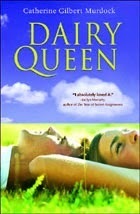 The gender binary isn’t going to disappear overnight. It can only be dismantled and undermined slowly, story by story. That’s where we have the responsibility as authors and readers to seek out literature that shows us that gender isn’t a binary - it’s a spectrum. Not everyone who is born with XX chromosomes is attracted to men, identifies as a woman, or has a uterus. To assume otherwise ignores the biological diversity of the human race.
The gender binary isn’t going to disappear overnight. It can only be dismantled and undermined slowly, story by story. That’s where we have the responsibility as authors and readers to seek out literature that shows us that gender isn’t a binary - it’s a spectrum. Not everyone who is born with XX chromosomes is attracted to men, identifies as a woman, or has a uterus. To assume otherwise ignores the biological diversity of the human race.
In an essay for PEN/American, I wrote that the first gay person I ever met was in a book (Mercedes Lackey’s Magic’s Pawn). The same is true for the first intersex person (Jeffrey Eugenides' Middlesex), and the first gender-fluid person (Kristin Elizabeth Clark's Freakboy). I am so grateful to all of these books for opening my mind to the spectrum of gender identity and sexual orientation. But the binary-busting books don’t stop there - they include novels about girl football players, like Catherine Gilbert Murdock’s Dairy Queen, and picture books about little boys who love wearing dresses like Sara and Ian Hoffman’s Jacob’s New Dress.
To read about others is to know them. To know them is to expand your world. Here’s to reading books that show a world beyond the gender binary. Here’s to showing our kids that girls can have masculine traits and that boys can be feminine, too.
By the way: Recently my daughter started Tae Kwon Do lessons. Her favorite color is now black.







 Related StoriesBoy Meets Girl: Guest Post by Lamar Giles (author of Fake ID and Endangered)Socioeconomic Class in Contemporary YA Lit: Where Are The Poor Teens? Guest Post by Librarian Faythe ArrendondoMental Illness in YA As a Minefield—Explore at Will: Guest Post by Rachel M. Wilson (author of Don't Touch)
Related StoriesBoy Meets Girl: Guest Post by Lamar Giles (author of Fake ID and Endangered)Socioeconomic Class in Contemporary YA Lit: Where Are The Poor Teens? Guest Post by Librarian Faythe ArrendondoMental Illness in YA As a Minefield—Explore at Will: Guest Post by Rachel M. Wilson (author of Don't Touch)
Published on December 04, 2014 22:00
Featured at BlogHer & A Big Welcome to STACKED!
Today, Kelly's post about how to keep your privacy safe on the internet is featured over at BlogHer. Go check it out if you missed it the first time around.
Because of that, we thought we'd do a quick revisit of who we are and what we do at STACKED.

Welcome new readers who are stopping by STACKED. If this is your first time here or you've been away for a while, we thought we'd give you a quick introduction to our blog, our history, and what it is we like to write about here.STACKED is run by Kelly Jensen and Kimberly Francisco, who met in graduate school for library/information studies at the University of Texas in Austin. The blog started in April 2009, with the goal of writing about books, reading, and other library-ish/book-ish content. We write critical book reviews, explore topics of interest to us in reading and books, and we're both unabashed feminists in how we think, read, and discuss. We're passionate about diversity, as well as passionate about matching books to readers. Though the bulk of our reading and blogging focuses on YA lit, we do talk about other categories of writing, too. We also offer up periodic week-long series on different topics of interest -- this week, for example, we've got 5 guest bloggers talking about different aspects of contemporary/realistic YA fiction, along with accompanying book lists.
A few posts to give you a feel and flavor of what you'll see around here:
Suicide and Depression in YA Fiction: A Discussion and Book List
Cover Math
Advocating For and Writing About Girls Is a Radical Act
Reviews, "Non-Fantasy Readers," and Finnikin of the Rock
Growing Up, Leaving Some Books Behind
Get Genrefied: YA in Translation
Thanks for stopping by and we hope you stick around, hop in, and/or pass along our blog to others who may be interested.








Because of that, we thought we'd do a quick revisit of who we are and what we do at STACKED.

Welcome new readers who are stopping by STACKED. If this is your first time here or you've been away for a while, we thought we'd give you a quick introduction to our blog, our history, and what it is we like to write about here.STACKED is run by Kelly Jensen and Kimberly Francisco, who met in graduate school for library/information studies at the University of Texas in Austin. The blog started in April 2009, with the goal of writing about books, reading, and other library-ish/book-ish content. We write critical book reviews, explore topics of interest to us in reading and books, and we're both unabashed feminists in how we think, read, and discuss. We're passionate about diversity, as well as passionate about matching books to readers. Though the bulk of our reading and blogging focuses on YA lit, we do talk about other categories of writing, too. We also offer up periodic week-long series on different topics of interest -- this week, for example, we've got 5 guest bloggers talking about different aspects of contemporary/realistic YA fiction, along with accompanying book lists.
A few posts to give you a feel and flavor of what you'll see around here:
Suicide and Depression in YA Fiction: A Discussion and Book List
Cover Math
Advocating For and Writing About Girls Is a Radical Act
Reviews, "Non-Fantasy Readers," and Finnikin of the Rock
Growing Up, Leaving Some Books Behind
Get Genrefied: YA in Translation
Thanks for stopping by and we hope you stick around, hop in, and/or pass along our blog to others who may be interested.








Published on December 04, 2014 06:12
December 3, 2014
Boy Meets Girl: Guest Post by Lamar Giles (author of Fake ID and Endangered)
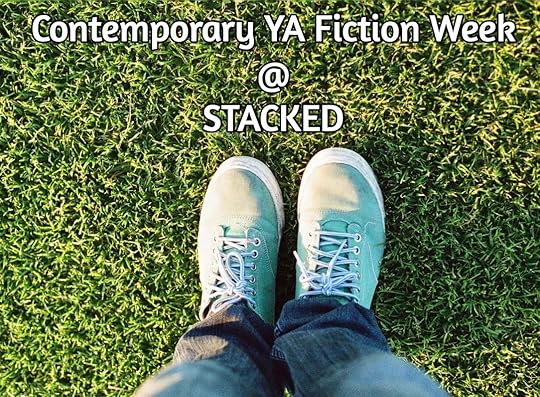
How often is it that female authors are asked to talk about how they write male main characters? Let's flip the script this time and see what a male author has to say about writing a realistic teen girl character. Welcome Lamar Giles!
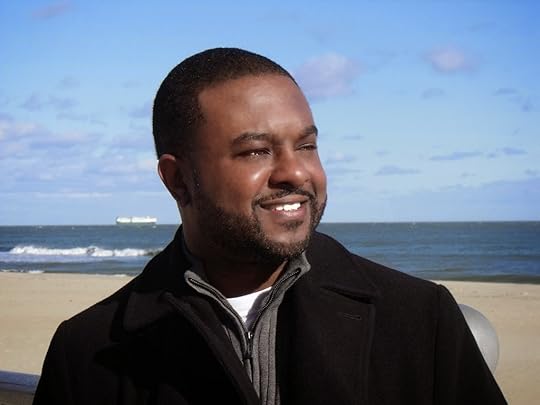
Lamar "L. R." Giles writes stories for teens and adults. He's never met a genre he didn't like, having penned science fiction, fantasy, horror, and noir thrillers, among others. He is a Virginia native, a Hopewell High Blue Devil, and an Old Dominion University Monarch. He resides in Chesapeake, Virginia, with his wife.
Fake ID is available now and Endangered will be available in April.
Awhile ago I was on a panel talking about my new book ENDANGERED, which will be out in April. I was discussing the protagonist—Panda—and how “she” does this, and “she” does that. During the Q&A, an audience member raised her hand and said something along the lines of, “So, you’re writing a girl? Are you worried about that?”
Well…I wasn’t until then.
I answered her question more elegantly than that—and because I write suspenseful things, I’ll hold off on telling you that answer. Instead, I’m going to focus on the broader topic, writing outside of one’s gender, and the trio of FAQs that often come along with it.
1) How do you do it? One word at a time (rimshot!)
2) Why? Because “write what you know” only takes you so far.
3) Should you be allowed to? Of course, and anyone who tells you you can’t should be plucked squarely (but gently, we’re not ruffians here) in the forehead.
Now that that’s out of the way, I told that audience member…Wait, what’s that? You’d like a little more detail on the how, why, and should questions. Some useful advice. Well, okay.
Whenever someone writes a character who isn’t a mirror image of themselves there’s inevitably the questions about the writer doing that character justice and/or should they have even attempted to write so far from their own purview? This concern is relegated mostly to writing outside of one’s gender or race (because no one has a problem with paunchy introverts writing about superheroes who live in dystopian futures and lead freedom fighters against corrupt governments). Because of my involvement in diversity movements, I’m often asked to comment on who’s allowed to write about what. My unwavering answer—write what you want.
No one should be able to dictate what happens between a writer and the blank page other than the writer herself.
However, the second part of my unwavering answer is be prepared to get called out if you’ve been lazy on your research, relied on stereotypes to flesh out your characters, or been wholly offensive in your portrayal.
Seems risky. Feels risky. Why go there at all?
I can’t speak for other writers, but I always want to grow, moving beyond my comfort zone. Nick Pearson from FAKE ID, I can write about him all day. There’s a lot of me in him. Panda comes from a different, harder to reach place. But…
NOT BECAUSE SHE’S A GIRL.
Because she’s had stuff happen to her that I’ve never experienced. Because she does things I could never do. The way she processes information is way different than how I do. These are exciting things to get into when you’re writing.
Though, that doesn’t make me exempt to what I’ve said before. I could’ve gotten something wrong, I could’ve written some stereotypical things, I hope I won’t offend anyone, but you don’t know until it happens.
So, was I worried about writing a girl? Not really. I told the audience member, at that long ago Q&A, that I didn’t think of Panda as a girl, but as a person. Her own person. She does things, says things, and thinks things that Panda would think. Did I pull it off?
I’ll worry about that another day.







 Related StoriesSocioeconomic Class in Contemporary YA Lit: Where Are The Poor Teens? Guest Post by Librarian Faythe ArrendondoMental Illness in YA As a Minefield—Explore at Will: Guest Post by Rachel M. Wilson (author of Don't Touch)The Less Financially Privileged Teens in Contemporary YA Fiction: A Reading List
Related StoriesSocioeconomic Class in Contemporary YA Lit: Where Are The Poor Teens? Guest Post by Librarian Faythe ArrendondoMental Illness in YA As a Minefield—Explore at Will: Guest Post by Rachel M. Wilson (author of Don't Touch)The Less Financially Privileged Teens in Contemporary YA Fiction: A Reading List
Published on December 03, 2014 22:00
The Less Financially Privileged Teens in Contemporary YA Fiction: A Reading List
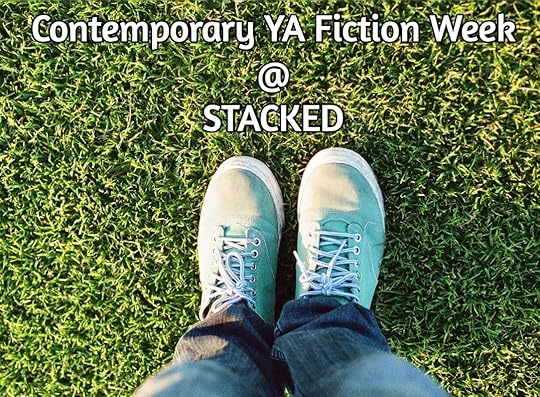
It's weird how often teens go on vacation, have summer rental homes, can afford cars (and car insurance!) or cell phones and other luxuries in YA fiction. It seems hardly representative of real life teens, many who work part-time jobs to pay for their own items or who work part-time to support their families. Faythe's post did an excellent job bringing up why the issues of social class matter when we read and think about contemporary realistic fiction. A few of the titles on this list are ones she's suggested.
Today, let's look at the contemporary YA books that feature main characters who don't have luxuries. These are the teens who aren't upper middle class -- or even middle-middle class -- and I've also included novels where teens are working part-time jobs and those part-time jobs are a significant part of who they are. All of these books have been published in the last 10 years and all descriptions come from WorldCat (unless otherwise noted).
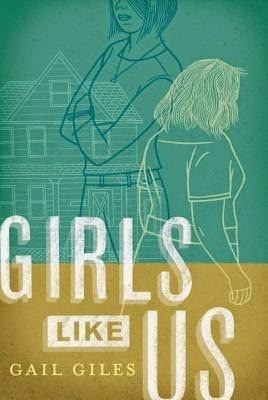
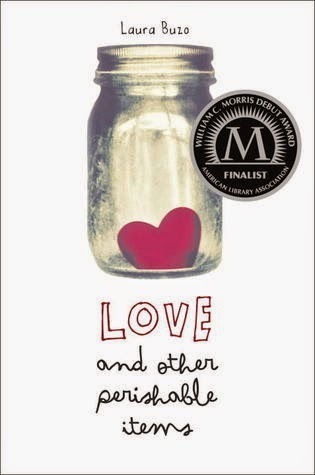
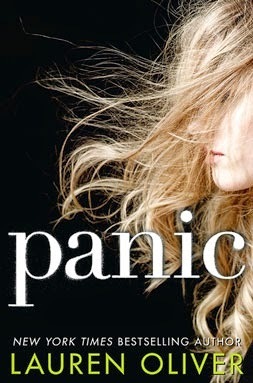
Girls Like Us by Gail Giles: Graduating from their school's special education program, Quincy and Biddy are placed together in their first independent apartment and discover unexpected things they have in common in the face of past challenges and a harrowing trauma.
Love and Other Perishable Items by Laura Buzo: A fifteen-year-old Australian girl gets her first job and first crush on her unattainable university-aged co-worker, as both search for meaning in their lives.
Panic by Lauren Oliver: Panic began as so many things do in Carp, a dead-end town of 12,000 people in the middle of nowhere: because it was summer, and there was nothing else to do. Heather never thought she would compete in Panic, a legendary game played by graduating seniors, where the stakes are high and the payoff is even higher -- $67,000. She'd never thought of herself as fearless, the kind of person who would fight to stand out. But when she finds something, and someone, to fight for, she will discover that she is braver than she ever thought... Dodge has never been afraid of Panic. His secret will fuel him, and get him all the way through the game, he's sure of it. But what he doesn't know is that he's not the only one with a secret. Everyone has something to play for. For Heather and Dodge, the game will bring new alliances, unexpected revelations, and the possibility of first love for each of them -- and the knowledge that sometimes the very things we fear are those we need the most.
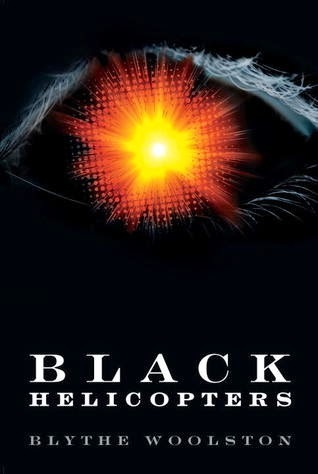
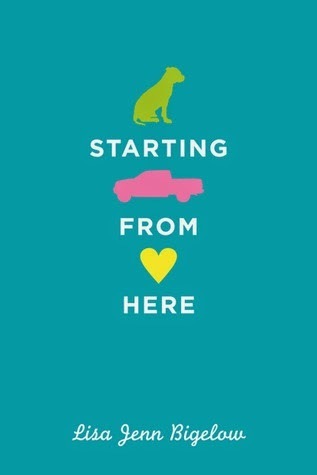
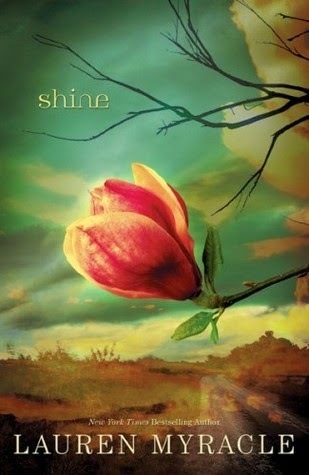
Black Helicopters by Blythe Woolston: In a day-after-tomorrow Montana, fifteen-year-old Valley (now Valkyrie) and her big brother leave their underground den to fight a government that will kill them like coyotes. (Note: All of Woolston's books feature rural impovershed characters).
Starting from Here by Lisa Jenn Bigelow: Sixteen-year-old Colby is barely hanging on with her mother dead, her long-haul trucker father often away, her almost-girlfriend dumping her for a boy, and her failing grades, when a stray dog appears and helps her find hope.
Shine by Lauren Myracle: When her best friend falls victim to a vicious hate crime, sixteen-year-old Cat sets out to discover the culprits in her small North Carolina town.
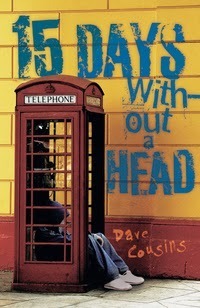
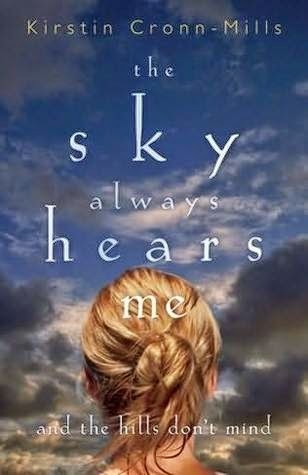
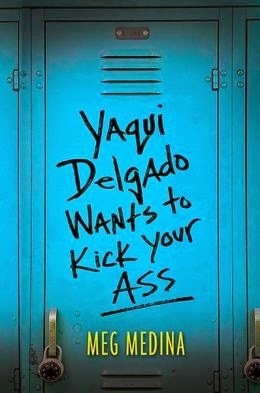
15 Days Without A Head by Dave Cousins: When his alcoholic mother disappears, fifteen-year-old Laurence is determined to find her, take care of his little brother, and keep their predicament a secret, all while trying to win a luxury vacation for his mom in a radio call-in contest.
The Sky Always Hears Me: And The Hills Don't Mind by Kristin Cronn-Mills: Sixteen-year-old Morgan struggles with her growing attraction to a co-worker, her unsatisfactory relationship with her boyfriend, and with her own sexual orientation after a girlfriend is rumored to be gay.
Yaqui Delgado Wants To Kick Your Ass by Meg Medina: One morning before school, some girl tells Piddy Sanchez that Yaqui Delgado hates her and wants to kick her ass. Piddy doesn't even know who Yaqui is, never mind what she's done to piss her off. Word is that Yaqui thinks Piddy is stuck-up, shakes her stuff when she walks, and isn't Latin enough with her white skin, good grades, and no accent. And Yaqui isn't kidding around, so Piddy better watch her back. At first Piddy is more concerned with trying to find out more about the father she's never met and how to balance honors courses with her weekend job at the neighborhood hair salon. But as the harassment escalates, avoiding Yaqui and her gang starts to take over Piddy's life. Is there any way for Piddy to survive without closing herself off or running away?
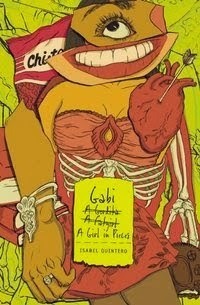
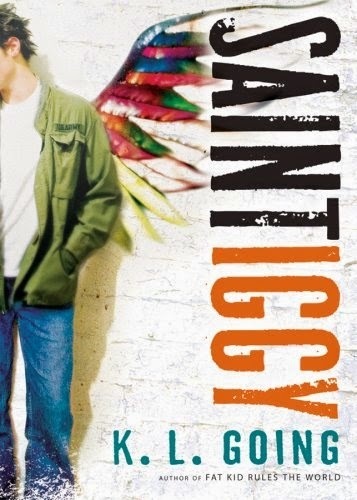
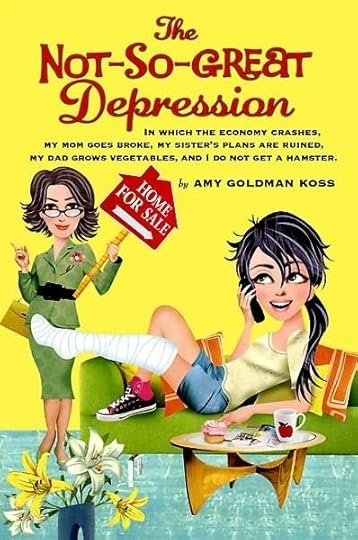
Gabi, A Girl in Pieces by Isabel Quintero: Sixteen-year-old Gabi Hernandez chronicles her senior year in high school as she copes with her friend Cindy's pregnancy, friend Sebastian's coming out, her father's meth habit, her own cravings for food and cute boys, and especially, the poetry that helps forge her identity.
Saint Iggy by K. L. Going: Iggy Corso, who lives in city public housing, is caught physically and spiritually between good and bad when he is kicked out of high school, goes searching for his missing mother, and causes his friend to get involved with the same dangerous drug dealer who deals to his parents.
The Not-So-Great Depression by Amy Goldman Koss: Jacki, a ninth-grader, does not understand when her teacher talks about unemployment and recession, until her mother loses her job and Jacki cannot buy the things she wants.
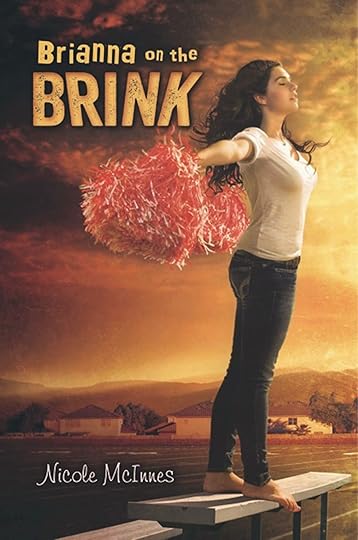
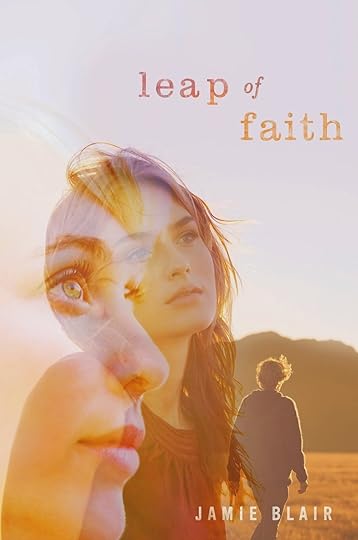
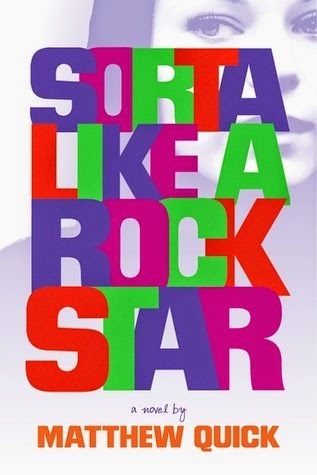
Brianna on the Brink by Nicole McInnes: A one-night stand has life-altering consequences for popular, sixteen-year-old Brianna, who must then accept help from the one person closest to her mistake.
Leap of Faith by Jamie Blair: Seventeen-year-old Faith shepherds her neglectful, drug-addicted mother through her pregnancy and then kidnaps the baby, taking on the responsibility of being her baby sister's parent while hiding from the authorities.
Sorta Like A Rock Star by Matthew Quick: Although seventeen-year-old Amber Appleton is homeless, living in a school bus with her unfit mother, she is a relentless optimist who visits the elderly at a nursing home, teaches English to Korean Catholic women with the use of rhythm and blues music, and befriends a solitary Vietnam veteran and his dog, but eventually she experiences one burden more than she can bear and slips into a deep depression.
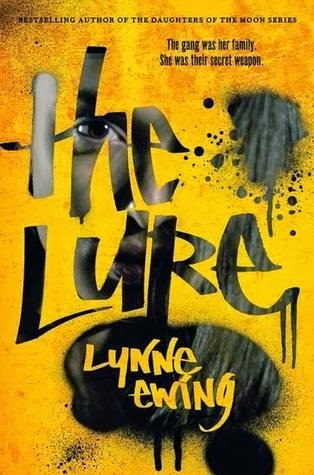
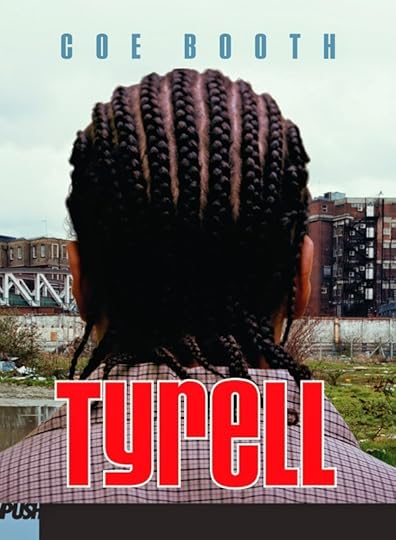
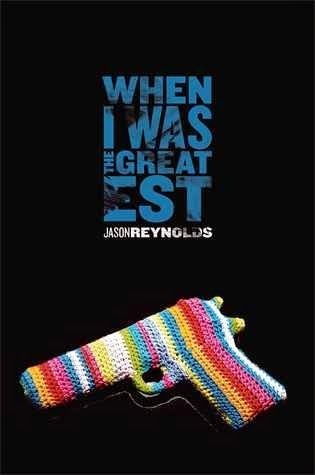
The Lure by Lynne Ewing: Living in a violent, impoverished town outside Washington, D.C., 15-year-old Blaise joins an infamous gang against the advice and warnings of her best friends only to be required by her new leader to put herself in life-threatening situations.
Tyrell by Coe Booth: Fifteen-year-old Tyrell, who is living in a Bronx homeless shelter with his spaced-out mother and his younger brother, tries to avoid temptation so he does not end up in jail like his father.
When I Was The Greatest by Jason Reynolds: Ali lives in Bed-Stuy, a Brooklyn neighborhood known for guns and drugs, but he and his sister, Jazz, and their neighbors, Needles and Noodles, stay out of trouble until they go to the wrong party, where one gets badly hurt and another leaves with a target on his back.
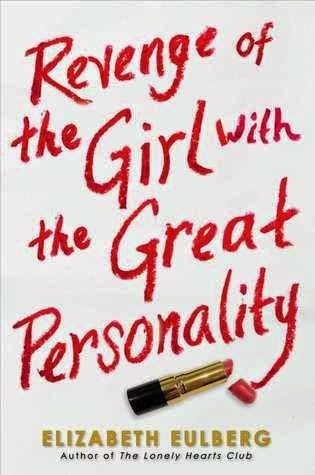
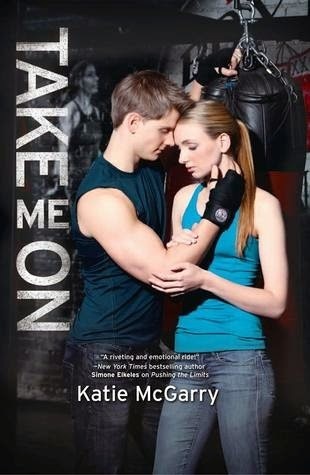
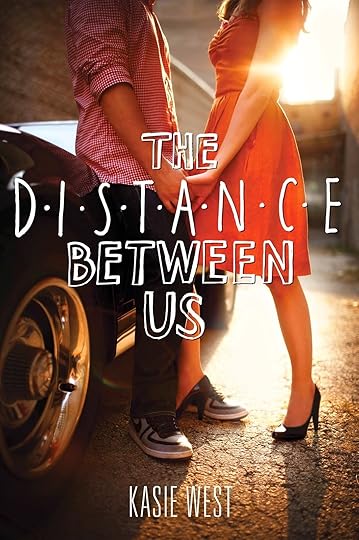
Revenge of the Girl with the Great Personality by Elizabeth Eulberg: Sick of living in the shadow of her seven-year-old pageant queen sister who is praised for her looks, Lexi resolves to get a makeover when she determines her personality just isn't enough to garner the attentions of boys.
Take Me On by Katie McGarry: Abandoning kickboxing after a tragedy in the ring, champion fighter Haley is forced to train an attractive mixed martial arts student who secretly fights on Haley's behalf to redeem his troubled past.
The Distance Between Us by Kasie West: Seventeen-year-old Caymen Meyers knows better thant to trust a rich boy. But then she meets the richest guy of all, who proves money might not matter after all.
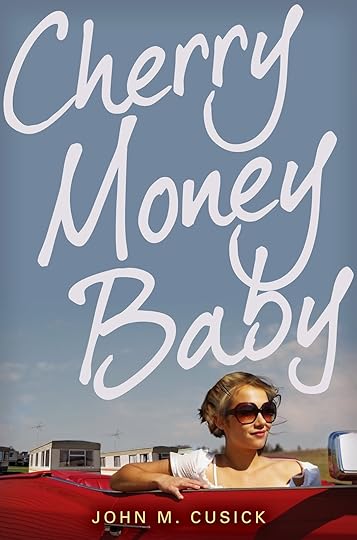
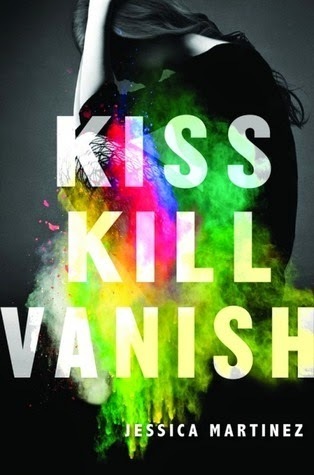
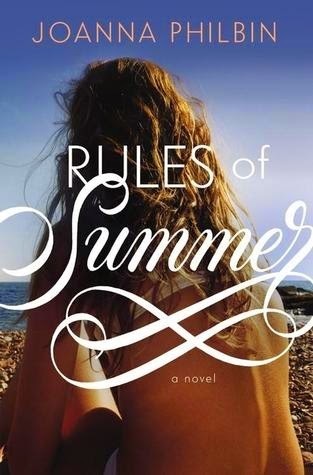
Cherry Money Baby by John M. Cusick: Cherry Kerrigan loves her simple life, her family's tiny trailer, even working at Burrito Barn. Forget college--she's marrying her sweetheart from next door. But here comes Ardelia Deen, a glamorous starlet who sweeps Cherry into a world of fast cars and penthouse parties. Now Cherry's small-town life just seems so small. When Ardelia drops a bomb of an offer, Cherry knows her life will change forever, no matter what she decides.
Kiss Kill Vanish by Jessica Martinez: A teenage girl flees her opulent life in Miami when she witnesses her boyfriend commit a murder that was ordered by her father.
Rules of Summer by Joanna Philbin: Spending the summer working as an errand girl for the Rule family in the Hamptons, seventeen-year-old Rory befriends the family's teenaged daughter and develops feelings for their older son, but she finds that societal rules can be hard to break.
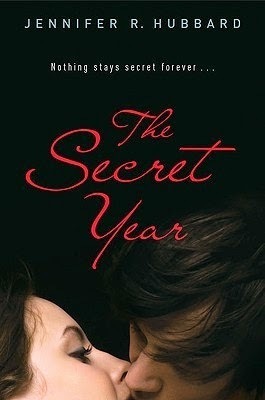
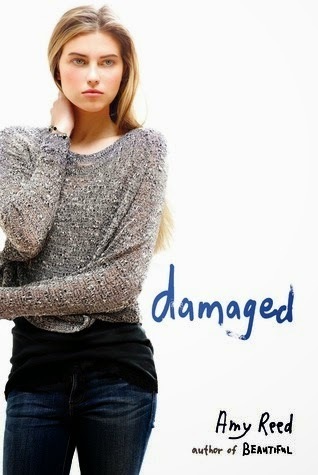
The Secret Year by Jennifer R. Hubbard: Reading the journal of the high-society girl he was secretly involved with for a year helps high school senior Colt cope with her death and come closer to understanding why she needed him while continuing to be the girlfriend of a wealthy classmate.
Damaged by Amy Reed: Numb after the death of her best friend, Camille, Kinsey starts to shut down but Hunter, Camille's mysterious boyfriend, has other ideas and whisks Kinsey off on a multi-state road trip to forget the ghosts of their pasts and their own fears.** Okay, this one is maybe not contemporary realistic YA, but that depends on your reading of the ghost here. More, the depiction of Kinsey's home financial situation and her job are noteworthy.







 Related StoriesSocioeconomic Class in Contemporary YA Lit: Where Are The Poor Teens? Guest Post by Librarian Faythe ArrendondoAdrenaline-fueled, Male-Centered Contemporary YA FictionMental Illness in YA As a Minefield—Explore at Will: Guest Post by Rachel M. Wilson (author of Don't Touch)
Related StoriesSocioeconomic Class in Contemporary YA Lit: Where Are The Poor Teens? Guest Post by Librarian Faythe ArrendondoAdrenaline-fueled, Male-Centered Contemporary YA FictionMental Illness in YA As a Minefield—Explore at Will: Guest Post by Rachel M. Wilson (author of Don't Touch)
Published on December 03, 2014 10:00
December 2, 2014
Socioeconomic Class in Contemporary YA Lit: Where Are The Poor Teens? Guest Post by Librarian Faythe Arrendondo

There's been more and more talk lately about the lack of diversity when it comes to socioeconomic class in contemporary YA fiction. Today, librarian Faythe Arrendondo talks about why this conversation is important and why we need to see more poor kids in realistic YA.
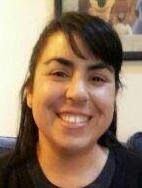
When she's not wasting time on Twitter, Faythe Arredondo is a teen services librarian is a rural (poor) area of California. She's a fan of dogs, hockey, popular culture, and getting ragey about things people take for granted.
For most of my life, I have been surrounded by people that can be classified as “rural poor.” It’s the nature of our agricultural area, especially now that we are in the midst of the worst drought anyone can remember. I’ve worked in or around the same area since I became a librarian. Nothing I see is new; it’s just how life is.
I'm not sure how the topic was brought up, but I think I mentioned how poor people in young adult literature aren't a “thing” like vampires and werewolves were/are. This sparked an immediate reaction from three of the teens sitting in my office. They went off on how you never "see anyone" like them. How there is "no middle" and characters are either homeless, from a drug riddled home, or rich. There are no characters that are just living life and trying to find their way in an “instant gratification takes too long” society. You don’t read about characters who have a place to live and food to eat, but “don't have the extras.” As I listened to them talk, my soul hurt. Here are three teens that know they are doing okay in life, but society would look at them with pity. That day I found out for certain the parents of these particular kids didn't work and their money comes from the government.
Some people would feel sorry for them because they don't have the latest iPhone, or an iPad, or a computer. These are things that a lot of people take for granted but for a lot of families, these things are an extravagance. Why is this? My gut reaction is because of popular culture. There are no leads in contemporary TV shows, movies, or books where an adolescent character doesn’t have a cell phone or an Internet connection at home. In the fall of 2013 I started a study hall at the library when I found out that a couple of the teens couldn’t finish their homework because they shared their small apartment with eight other people. They also couldn't get some of their homework done because teachers were putting the homework assignments and extra credit online. These teens would walk 20 minutes from school to the library and study for at least two hours. They would have to leave by 6pm because their walk home took almost an hour. They couldn't afford bus passes.
This isn't abnormal. These kids aren’t special cases. This is their norm. According the National Center for Children in Poverty, 41% of adolescents (their definition is ages 12-17) live in low-income families. This is fact. I didn’t know these numbers when I decided I needed to call attention to the lack of the socio-economic diversity (low-income) in books. I only knew what I saw on a daily basis and what I lived with growing up. We didn’t have the “extras” growing up, yet all I seemed to see when I read YA books were teens who had everything and didn’t have to worry about trying to finish their homework to avoid flunking.
So why isn't this large group of teens represented in culture? When was the last time you read a book about low income kids that didn't involve drugs, aliens, the supernatural, government control, or a natural disaster? Can you recall a book when teens are from a low-income family that takes place in modern society? Where things like a cell phone or computer aren't commonplace? Or the family is on welfare? Reading should open up your worldview, but not discussing low-incomes teens or families is failing all readers.
I was given access to the Children's Literature Comprehensive Database and I did some searching trying to find books that had low-income families. The first search I did was for “poor” with 2013 and 13-18 as filters. That returned just 68 results. Of those, 22 used “poor” as a descriptor including “poor judgment” and “poor little rich girl.” Only eight of these results actually had low-income teens or similar situations in the books. A couple of months later I decided to use the same filters but try “poverty” instead and only found nine of 46 books had low-income teens.
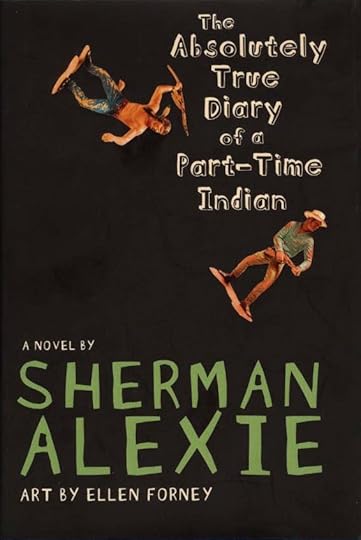 To say I was disappointed in the results would be an understatement. I thought there would be more, but I did find some titles that address socioeconomics. I read a lot and I don’t remember more than a handful that talked about poor teens and their lives. These are the books that we need to talk about and read. The more we read, the more demand there will be.
To say I was disappointed in the results would be an understatement. I thought there would be more, but I did find some titles that address socioeconomics. I read a lot and I don’t remember more than a handful that talked about poor teens and their lives. These are the books that we need to talk about and read. The more we read, the more demand there will be.
The first one that immediately comes to mind is Sherman Alexi’s The Absolutely True Diary of a Part-Time Indian. This books tackles so many issues that a lot of YA books shy away from. It is probably one of the first books I can remember reading that actually addressed being poor. To try and get ahead, Junior had to make an effort and attend school off the reservation. This reminded me of the teens I work with at the library. They make the extra effort a lot of people take for granted.
The Distance Between Us by Kasie West tackles the rich versus poor in a small coastal town. Money is an obvious issue and drives most of the plot, but it takes the easy way out in the end by having the protagonist find her wealthy grandparents. This theme also plays a part in Maggie Stiefvater’s Raven Boys (of which I’ve only read book 1). It’s a point of contention between the characters almost every time they interact. The book isn’t exactly contemporary, but I felt it should be mentioned along with The Distance Between Us.
In The Lure by Lynne Ewing, Blaise lives outside of Washington DC where life is not easy. By being a “lure” for the local gang, Blaise can find money, safety, and love. She lives in a broken down neighborhood where violence is commonplace. She sees being in a gang as her only way to survive and have money. Lack of money is the driving factor in this book and it’s a favorite among some of the teens in my library.
On the flip side, Lauren Oliver’s Panic takes place in rural New York. These kids are some that I recognize: teens who want to get out of their life, want to break the cycle and who have to work if they want the extra things. The teens in this story all have cells phones, but they all also seem to have jobs. They literally risk their lives to win money so they can start their lives some place else. The plot may seem a little far-fetched, but the motivating factors are genuine.
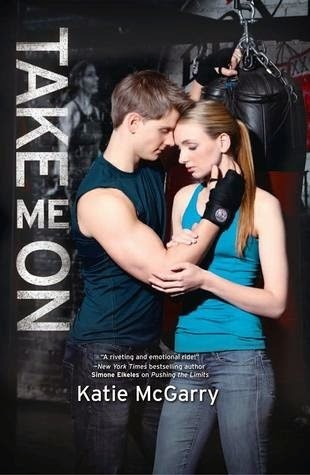 One author who always incorporates low-income teens is Katie McGarry. In her latest, Take Me On, the protagonist and her family were evicted from their home and are temporarily homeless. The rich guy in the story is cut off from his parents and also ends up homeless for a little while. Prior to this novel, each title had a protagonist who was in the foster care system. By book three in the series, two of the characters lived in their own apartment, but always had to worry about making rent. I recommend these books to my teen patrons because they contain something for everyone.
One author who always incorporates low-income teens is Katie McGarry. In her latest, Take Me On, the protagonist and her family were evicted from their home and are temporarily homeless. The rich guy in the story is cut off from his parents and also ends up homeless for a little while. Prior to this novel, each title had a protagonist who was in the foster care system. By book three in the series, two of the characters lived in their own apartment, but always had to worry about making rent. I recommend these books to my teen patrons because they contain something for everyone. The latest book to capture my attention is Gabi, a Girl in Pieces by Isabel Quintero. It is a book people need to talk about more and handles almost every issue a teen can face. It’s the first time I read a book and could see actual people in the characters, with situations that happened to people I know. When Gabi loses a cell to water damage, she didn’t get a new one right away. In fact, she had no real plans to replace it because she had no money. I can recall several instances in other books when a teen lost their phone and it was replaced instantly.
These are just a handful of books I’ve read and thought they did a good job of addressing low-income families. I want everyone to read these books and talk more about them, but it’s not enough. These are a fraction of books published. Why can books about vampires, angels, aliens, werewolves, and so on be published ad nauseum, but we can’t publish fiction that actually reflects its readers? Why can’t there be more books about teens that live in a low-income family? It’s up to us as readers to question publishers and writers as to why we aren’t seeing these teens in literature. If we don’t ask, they won’t realize there is a need.







 Related StoriesMental Illness in YA As a Minefield—Explore at Will: Guest Post by Rachel M. Wilson (author of Don't Touch)Adrenaline-fueled, Male-Centered Contemporary YA FictionThe Necessity of Violence: Guest Post from Eric Devine (Author of Press Play, Dare Me, and Tap Out)
Related StoriesMental Illness in YA As a Minefield—Explore at Will: Guest Post by Rachel M. Wilson (author of Don't Touch)Adrenaline-fueled, Male-Centered Contemporary YA FictionThe Necessity of Violence: Guest Post from Eric Devine (Author of Press Play, Dare Me, and Tap Out)
Published on December 02, 2014 22:00



